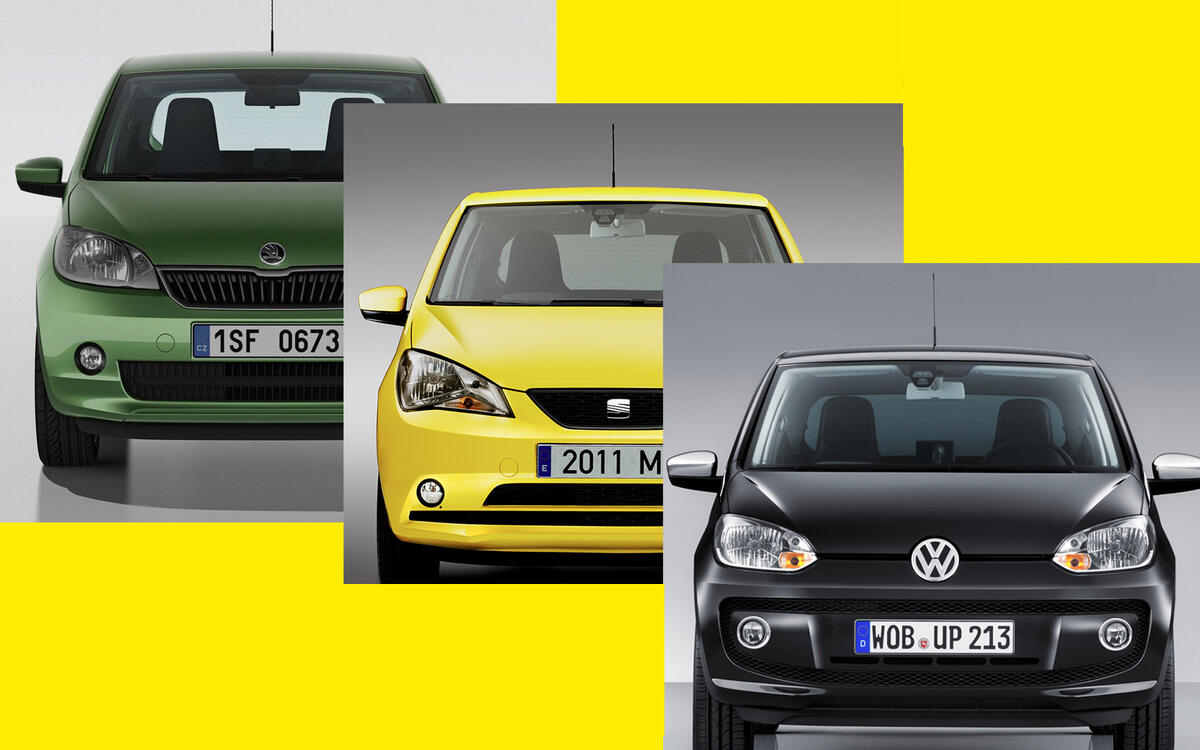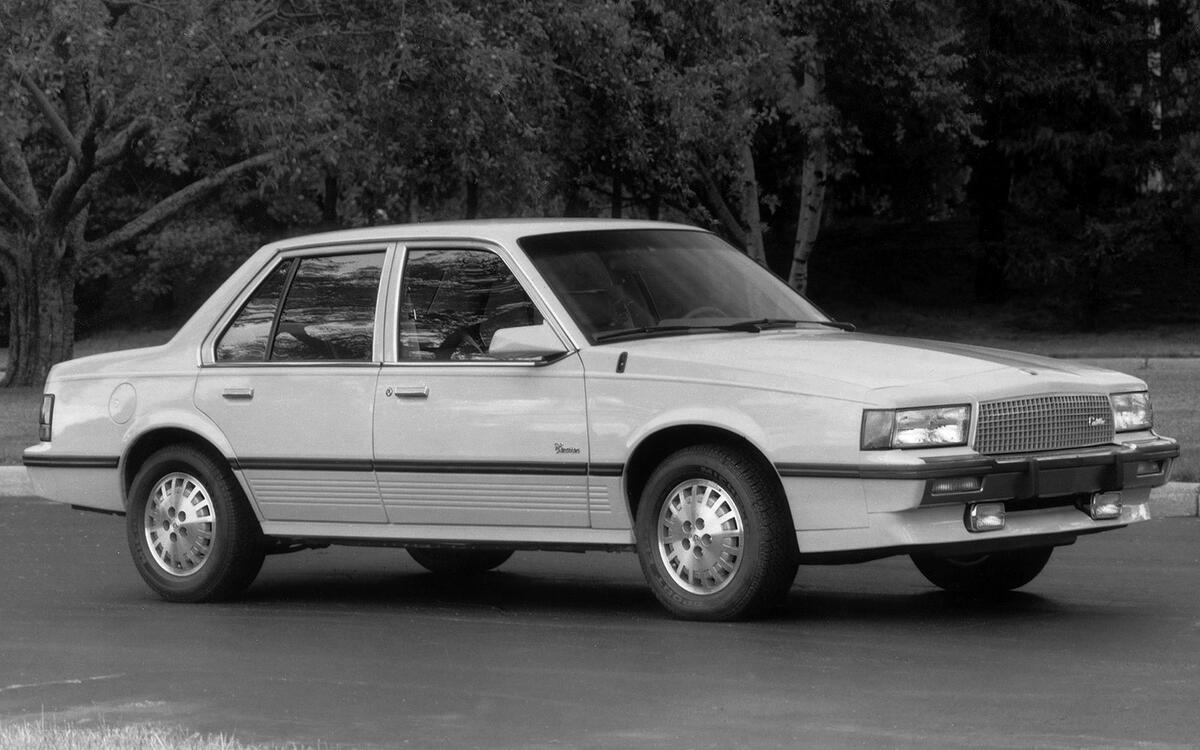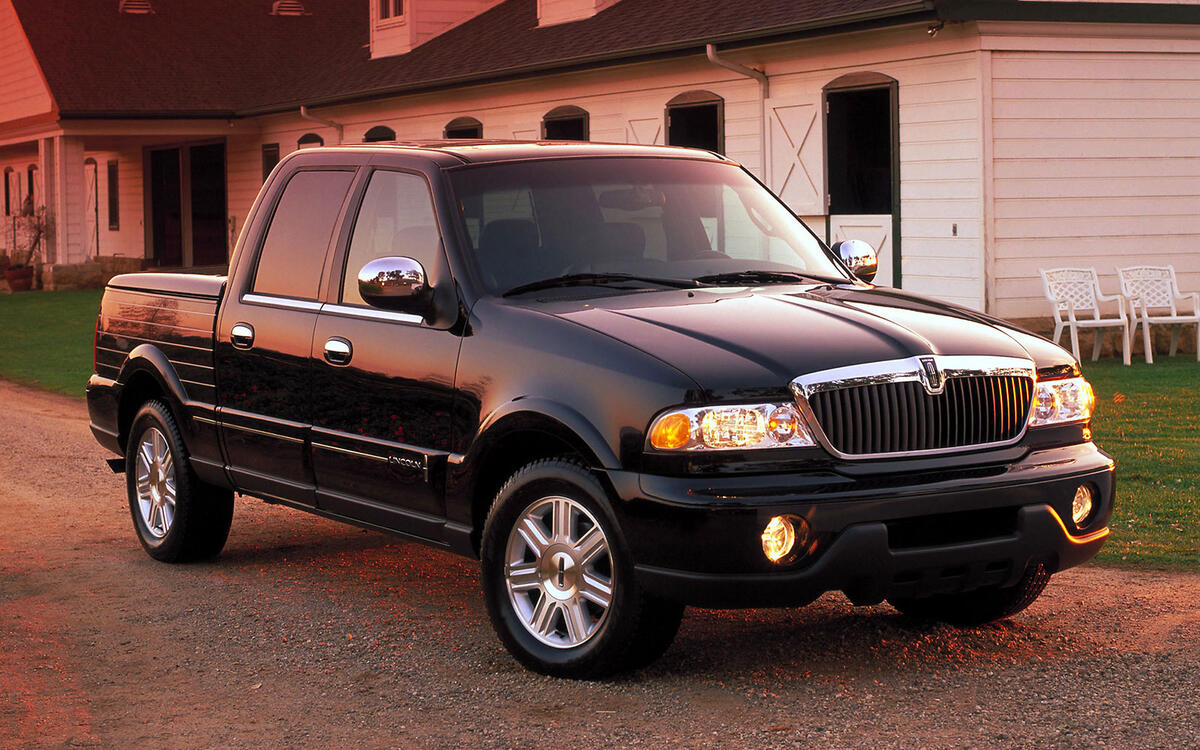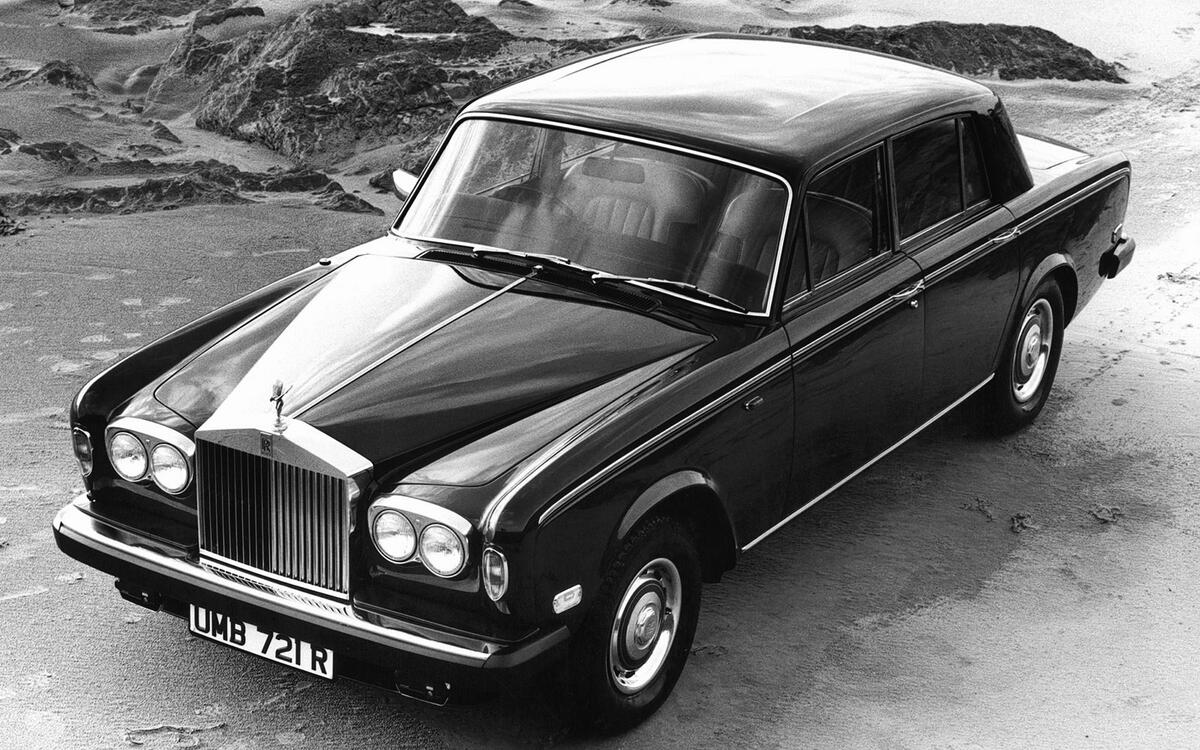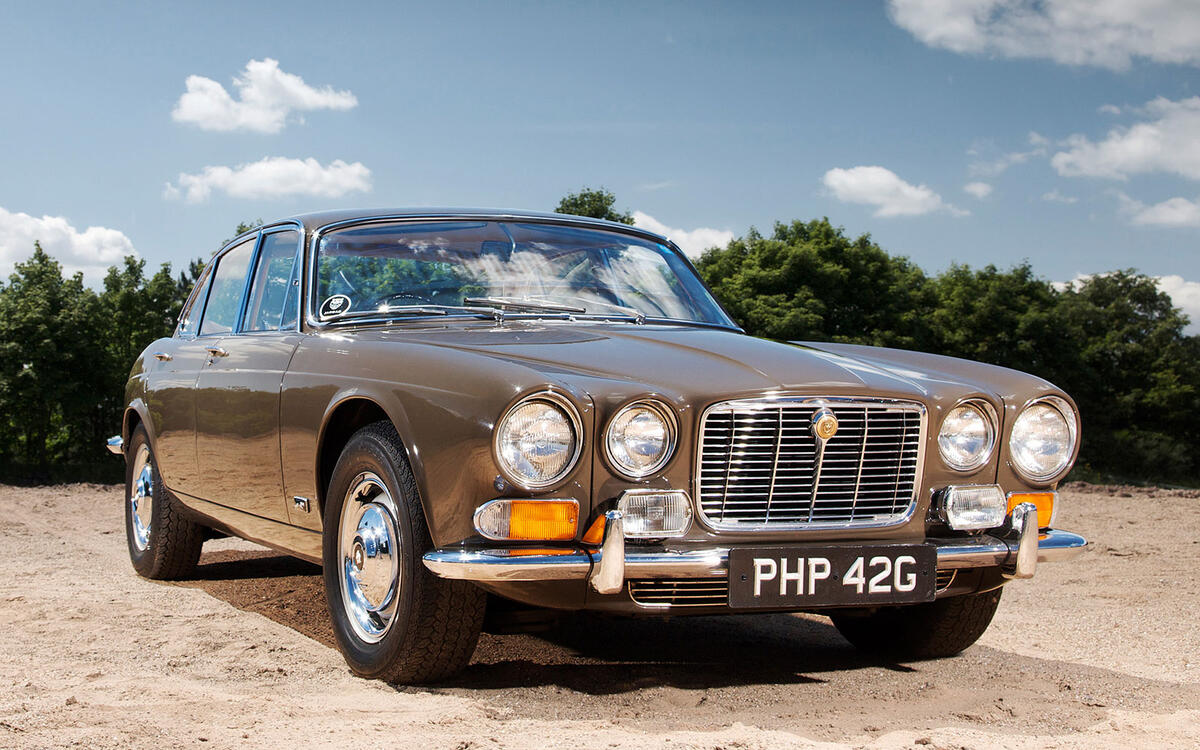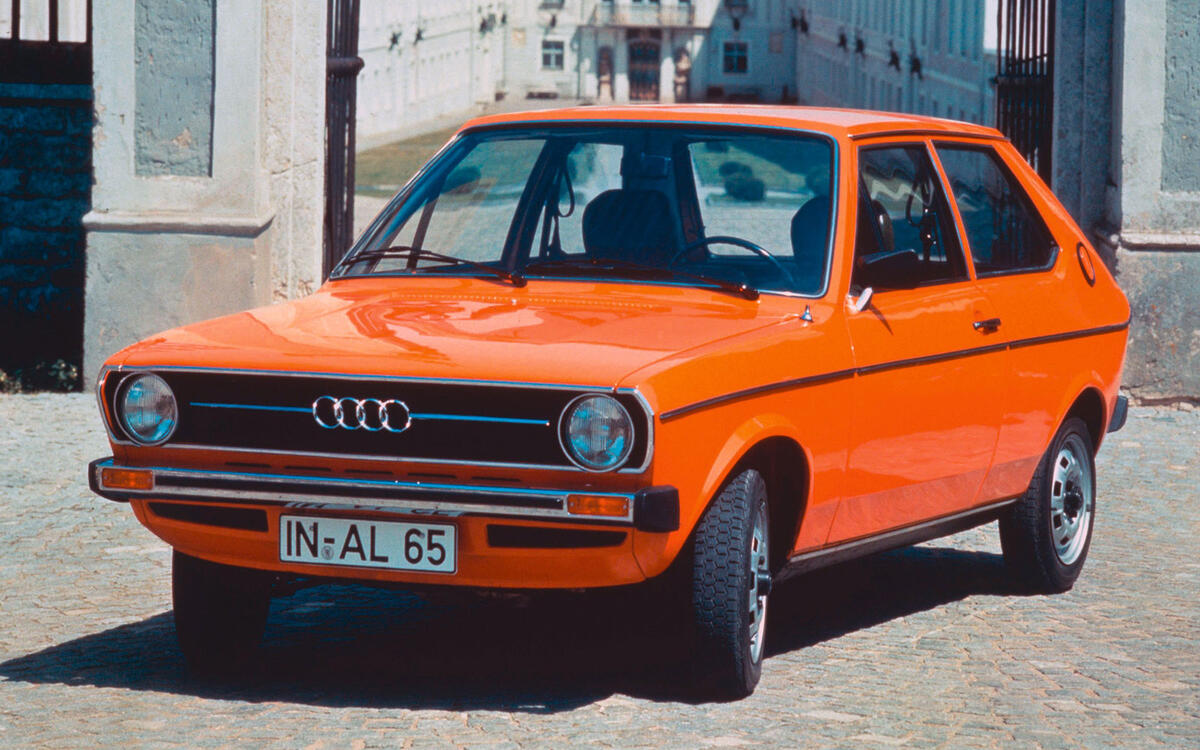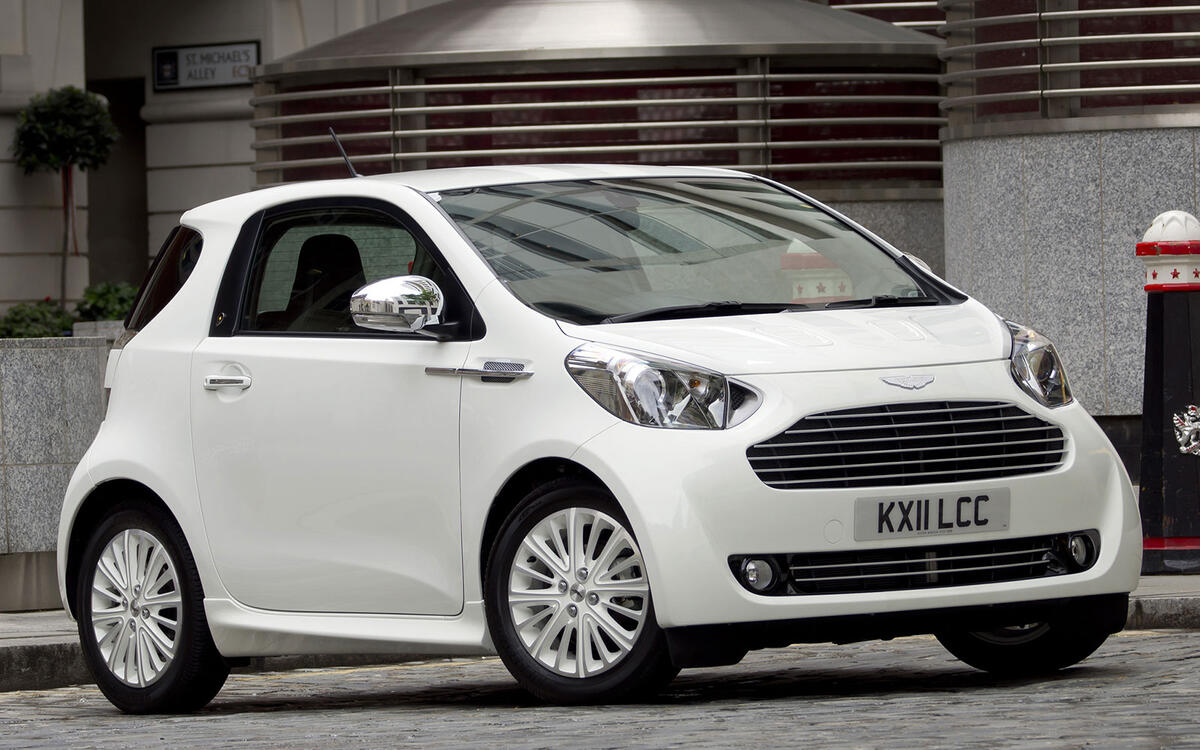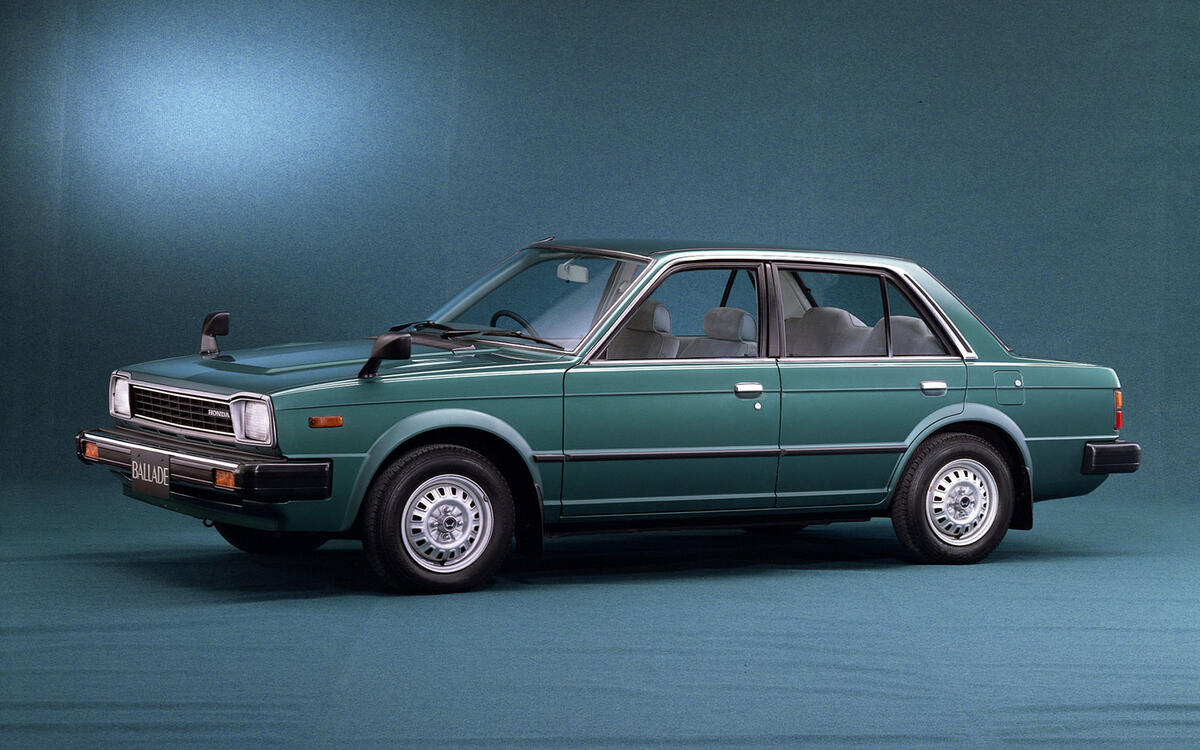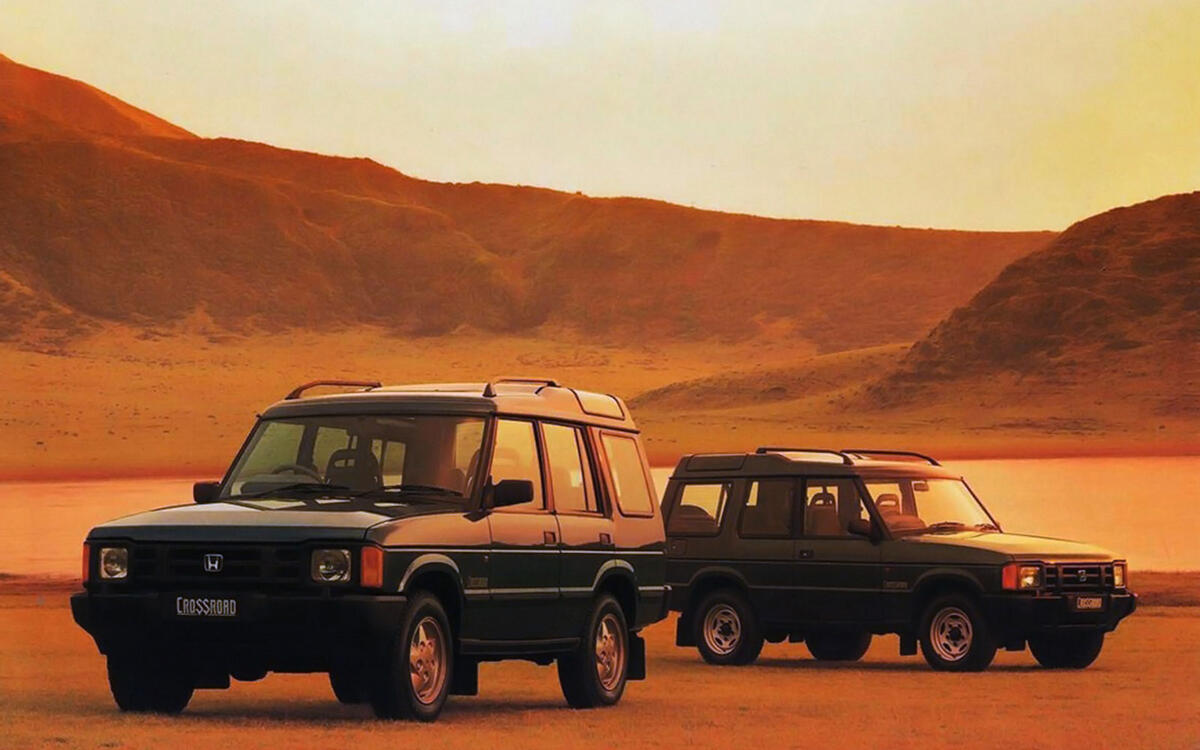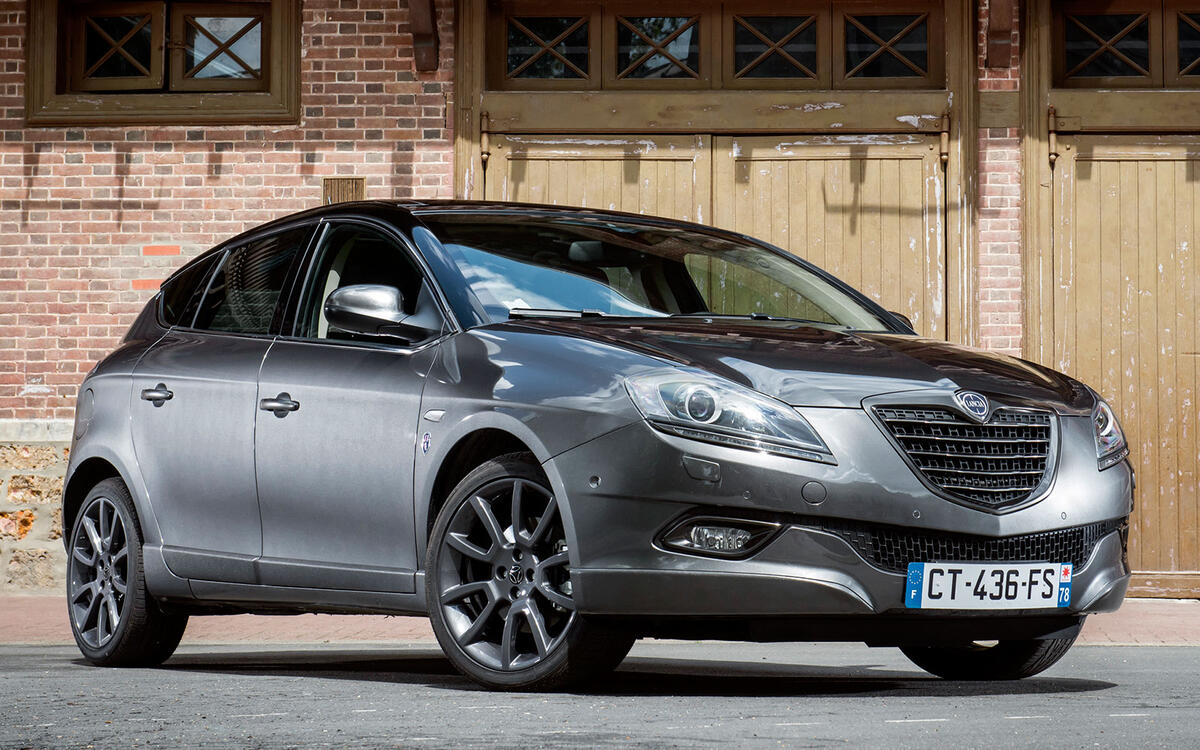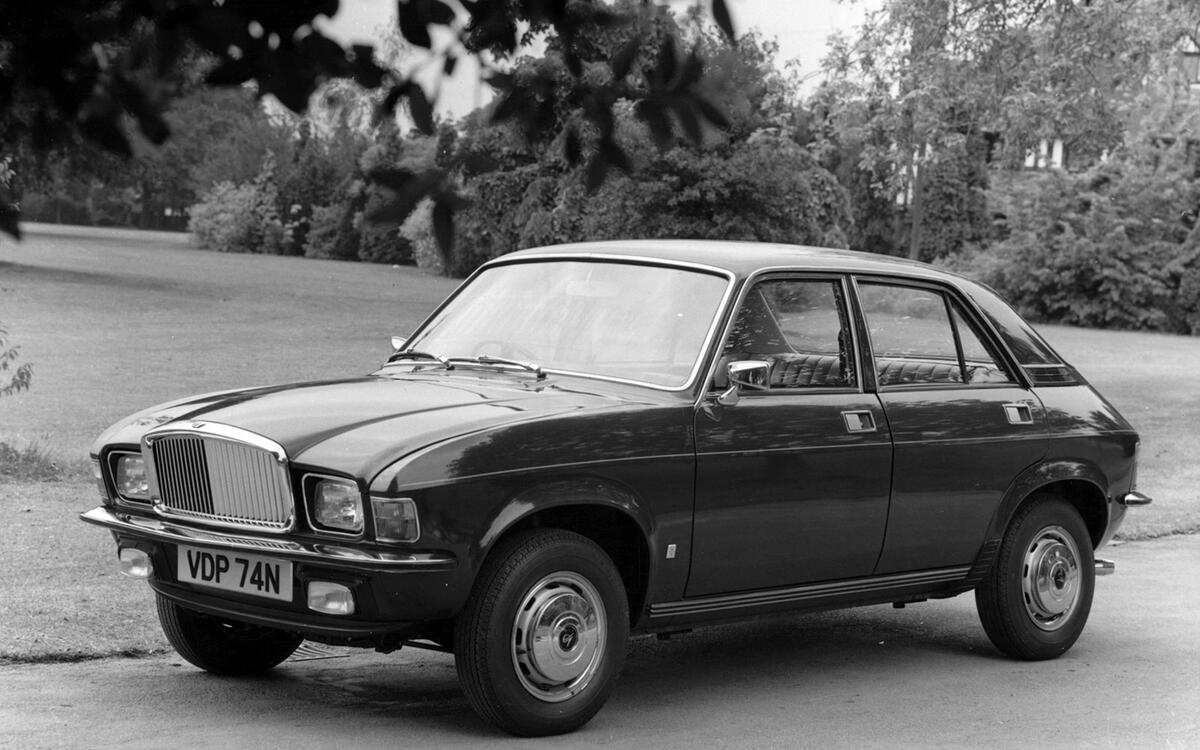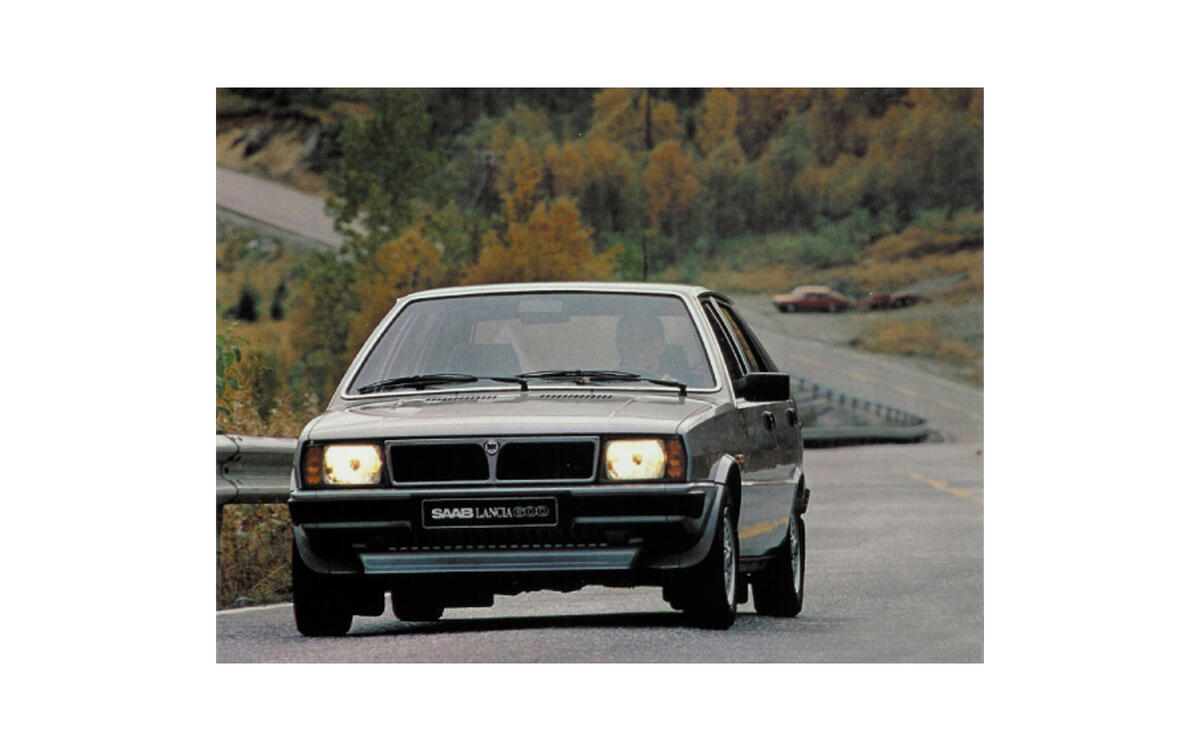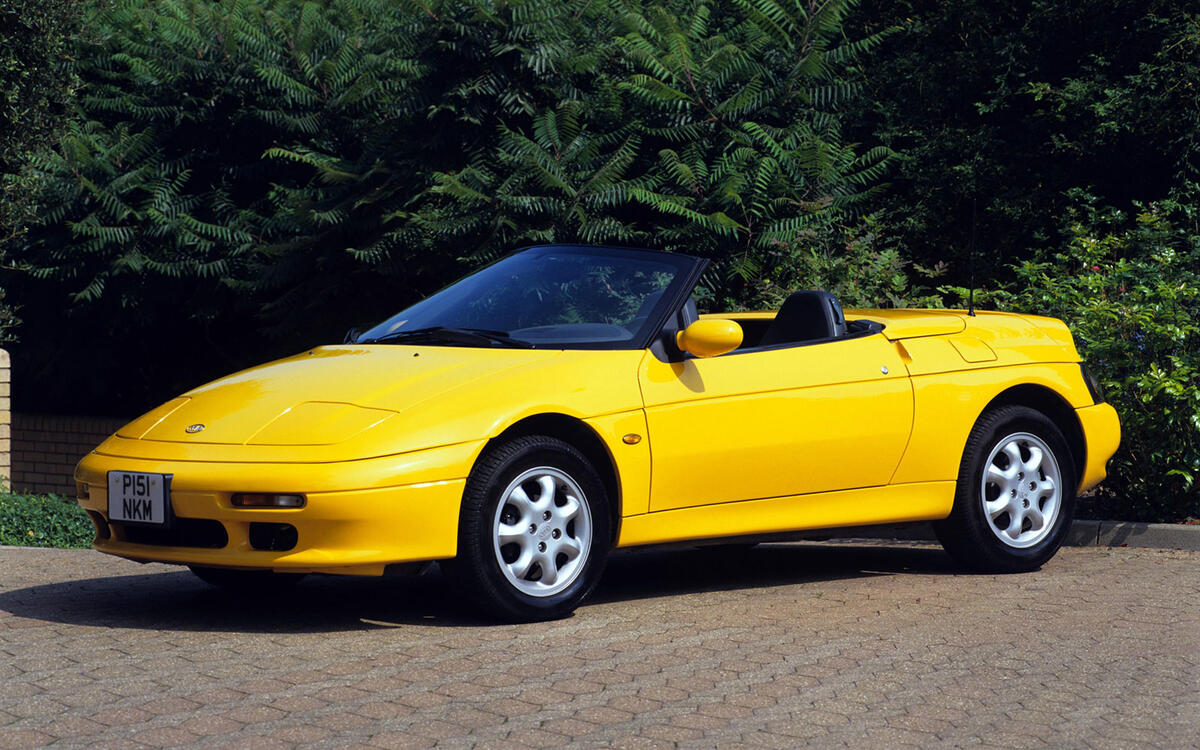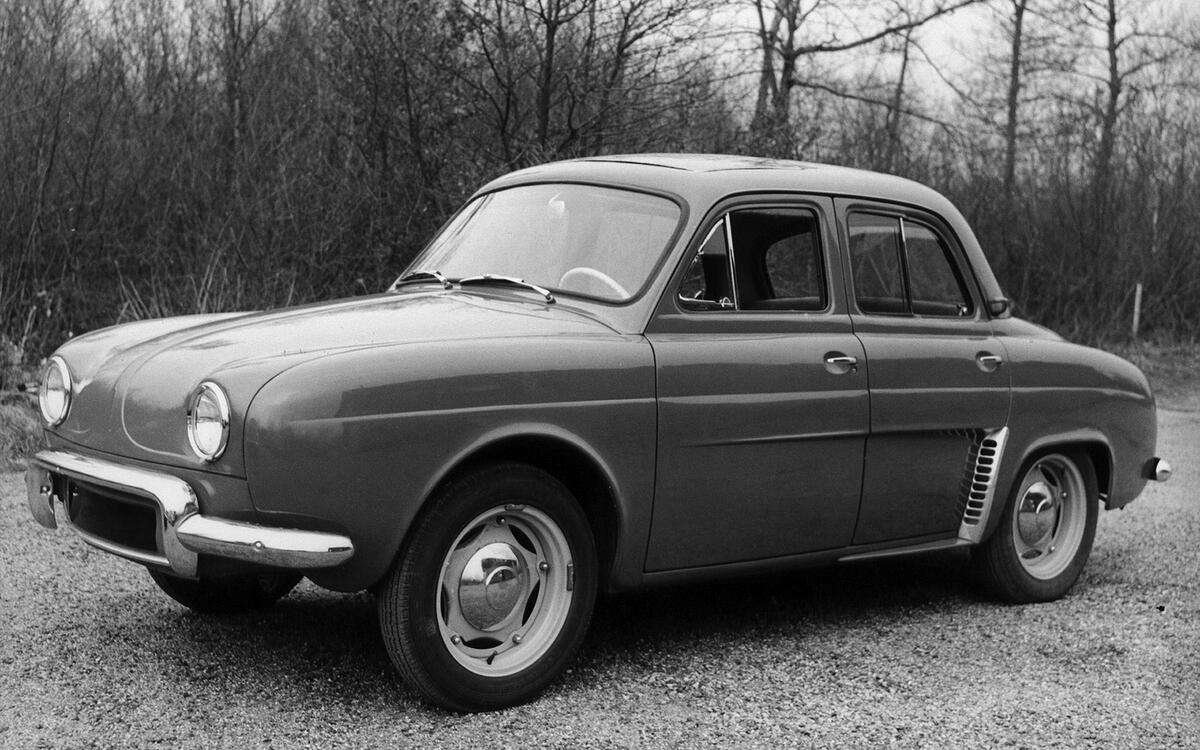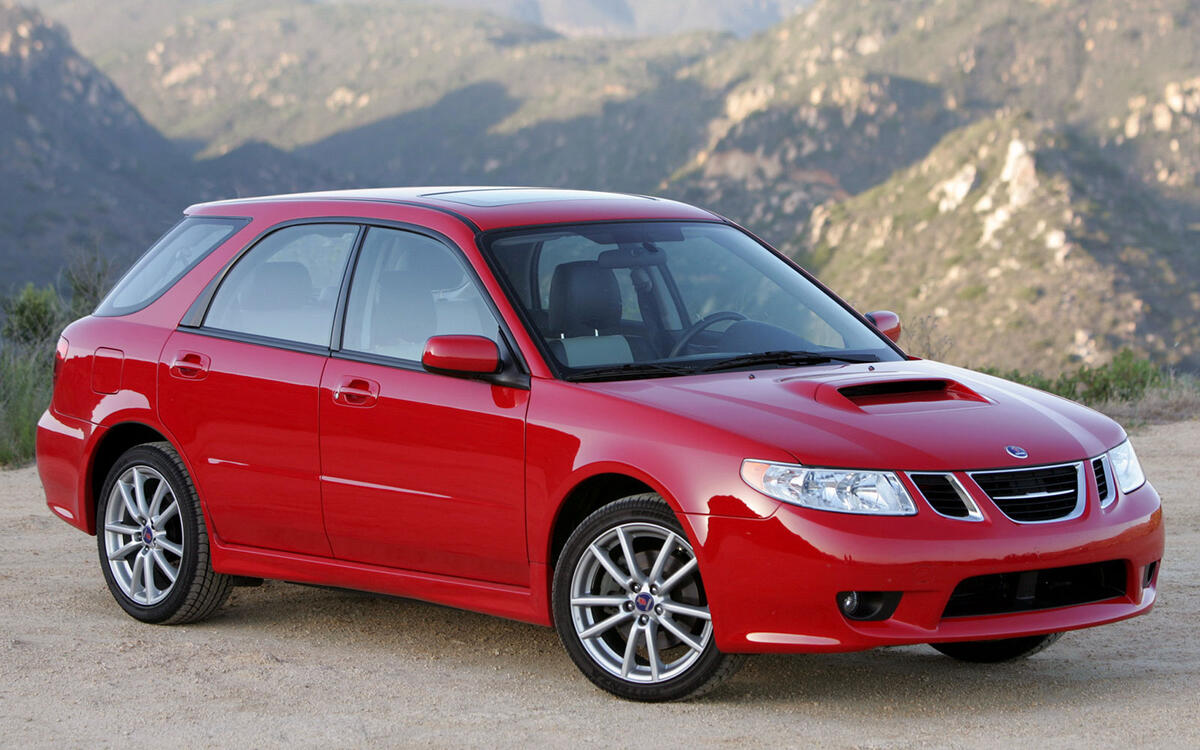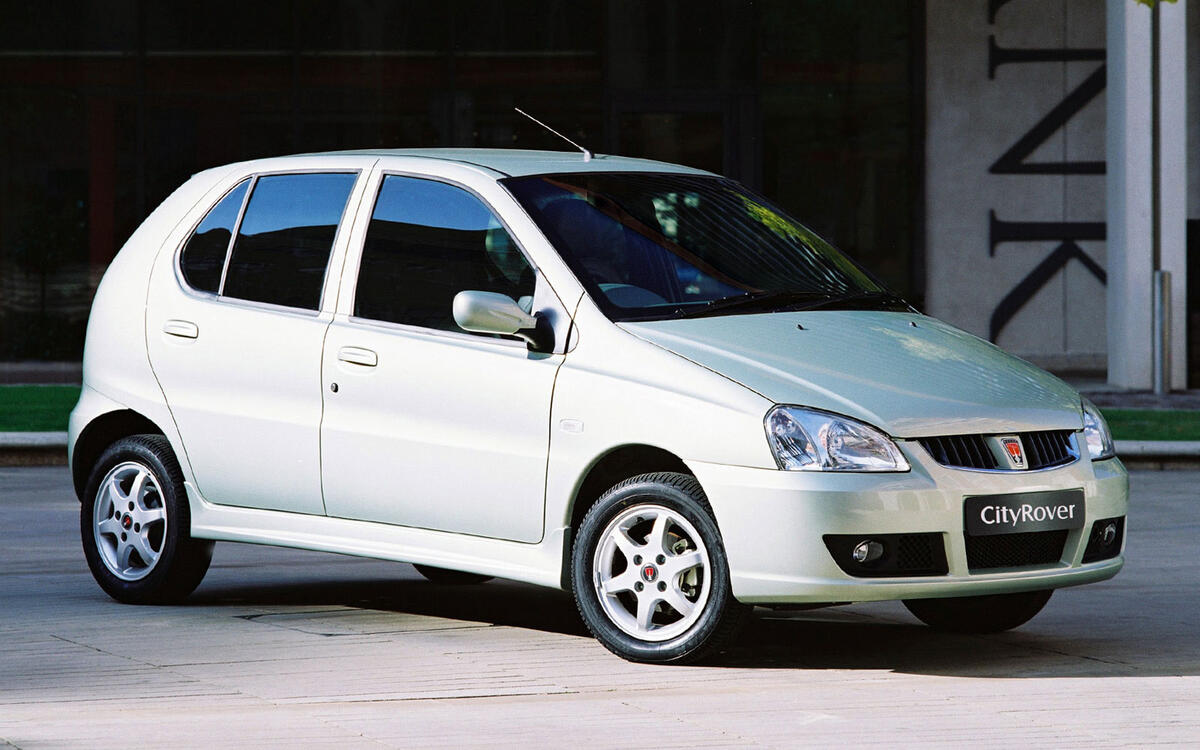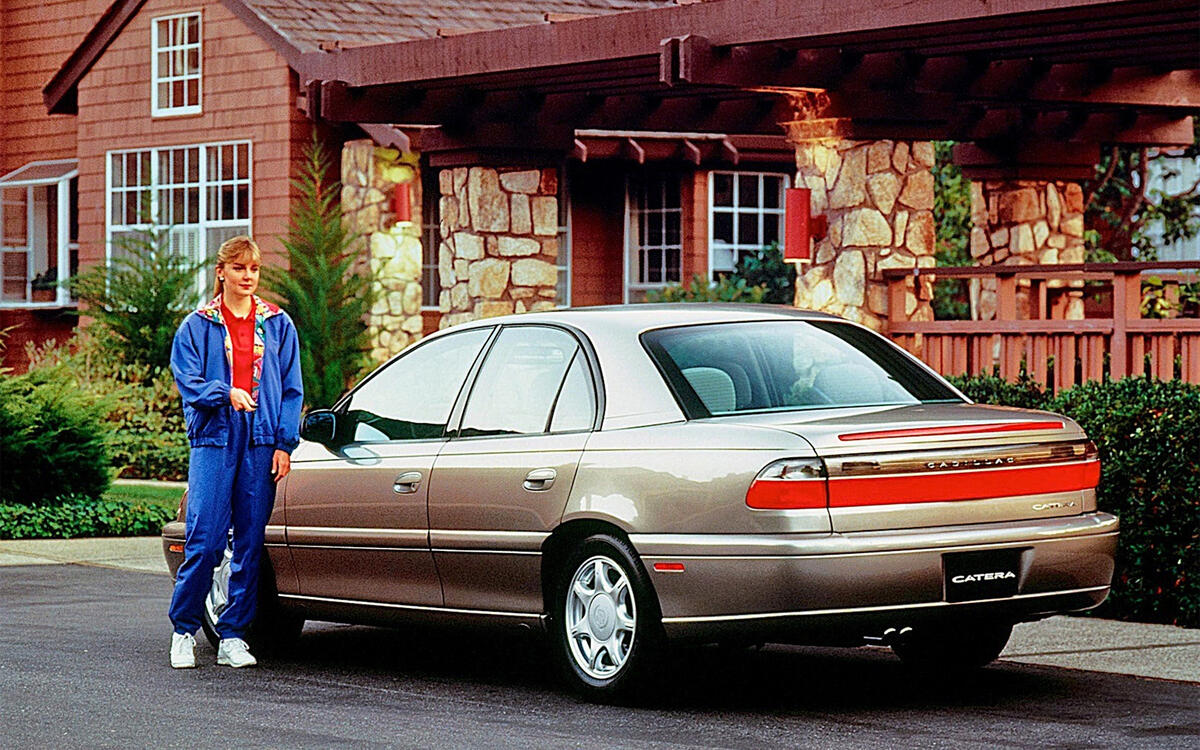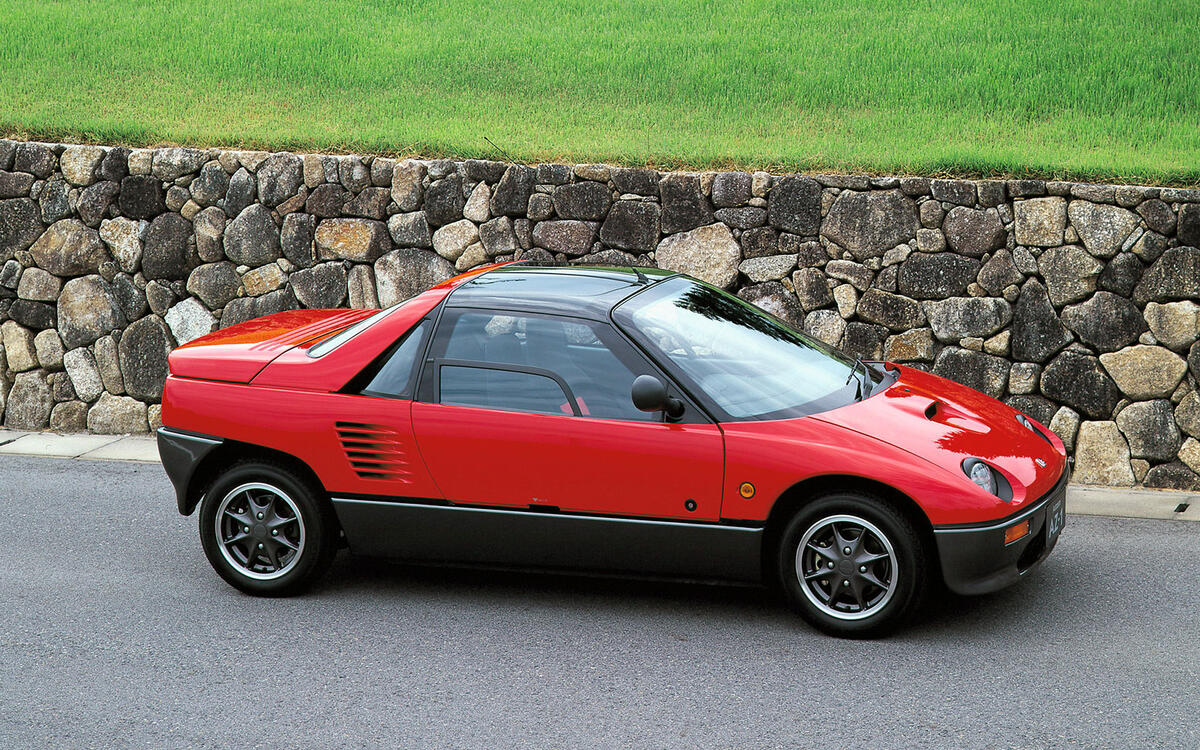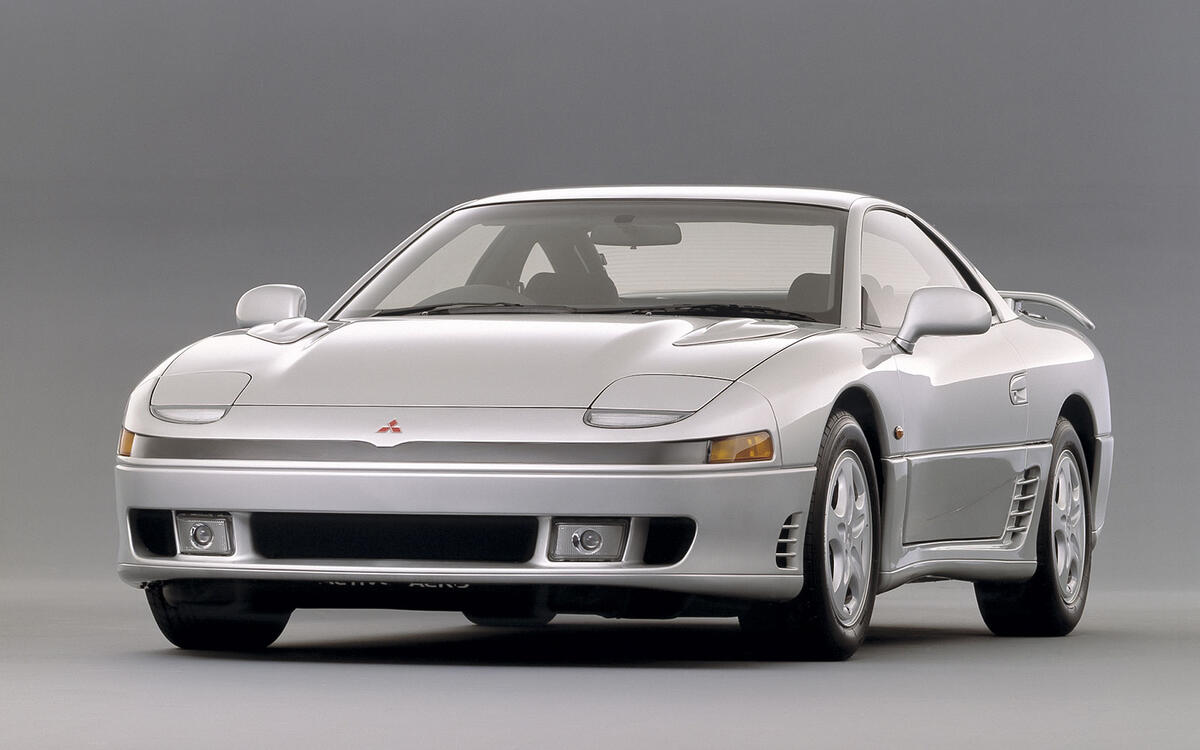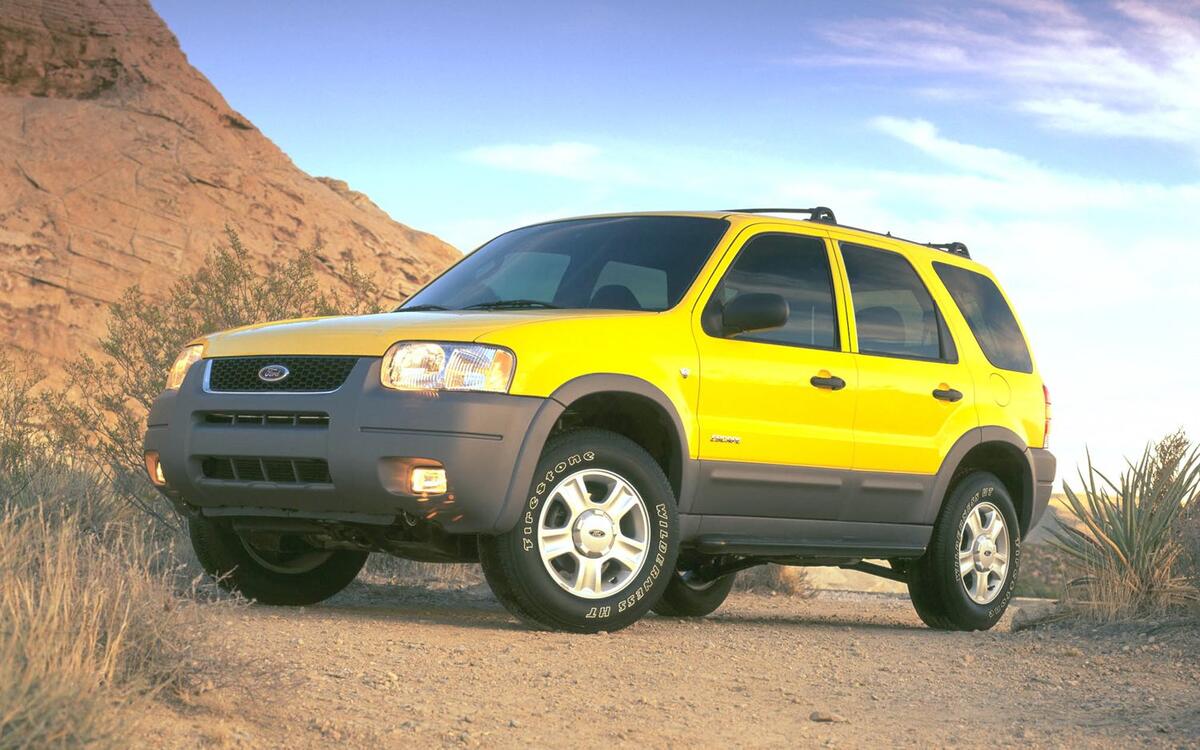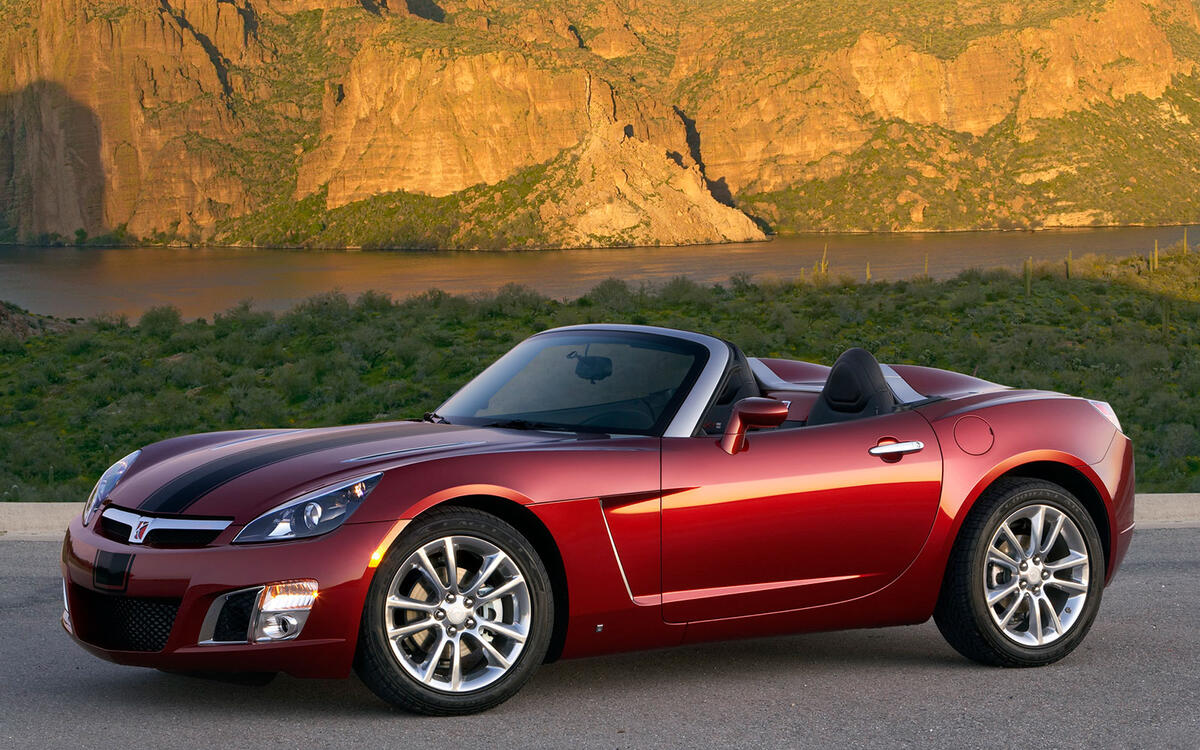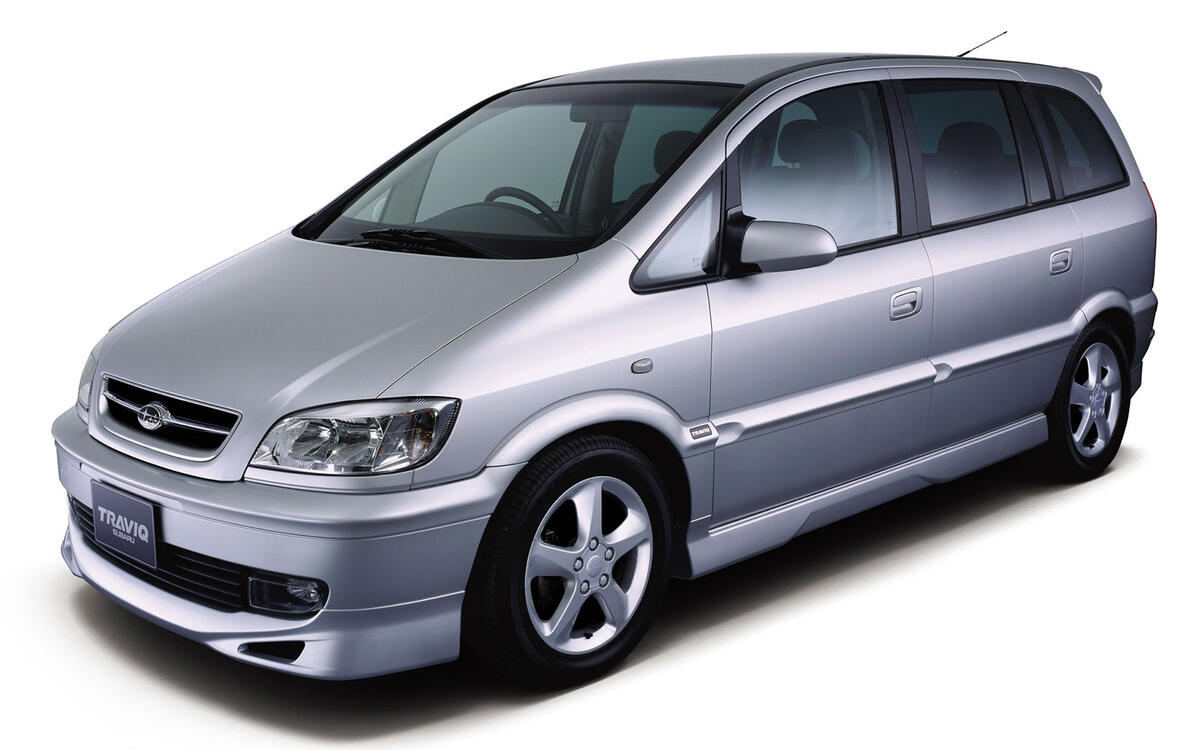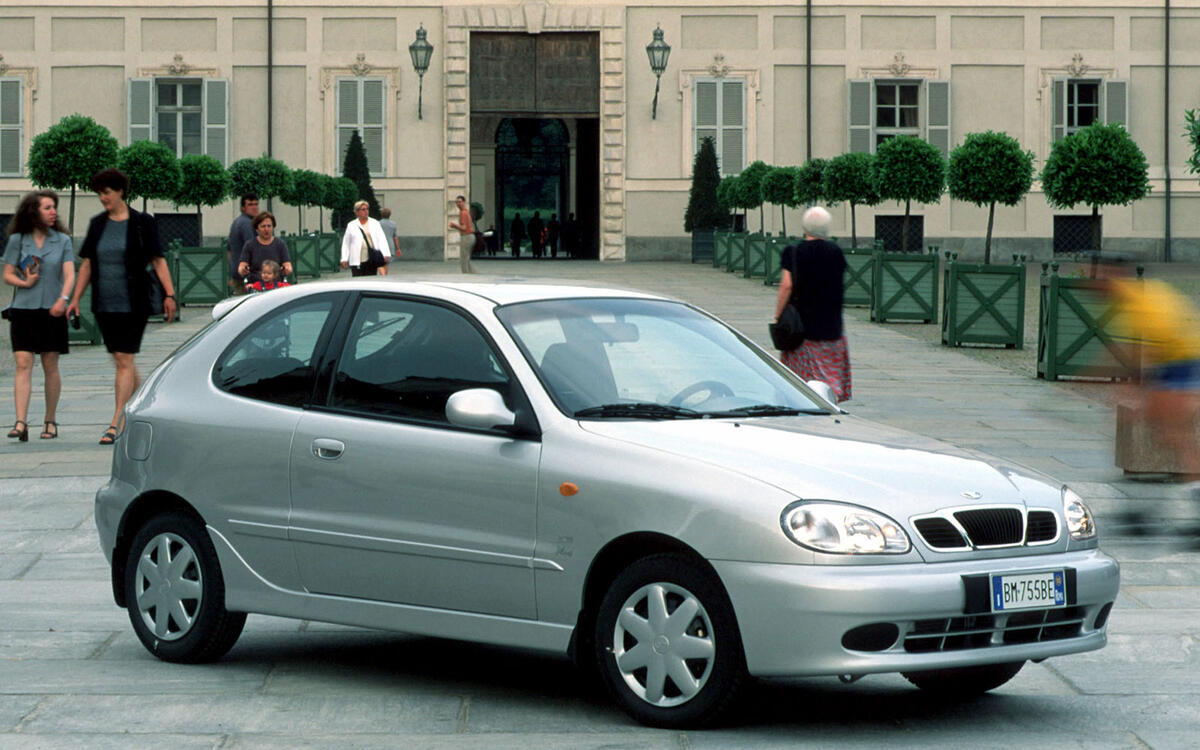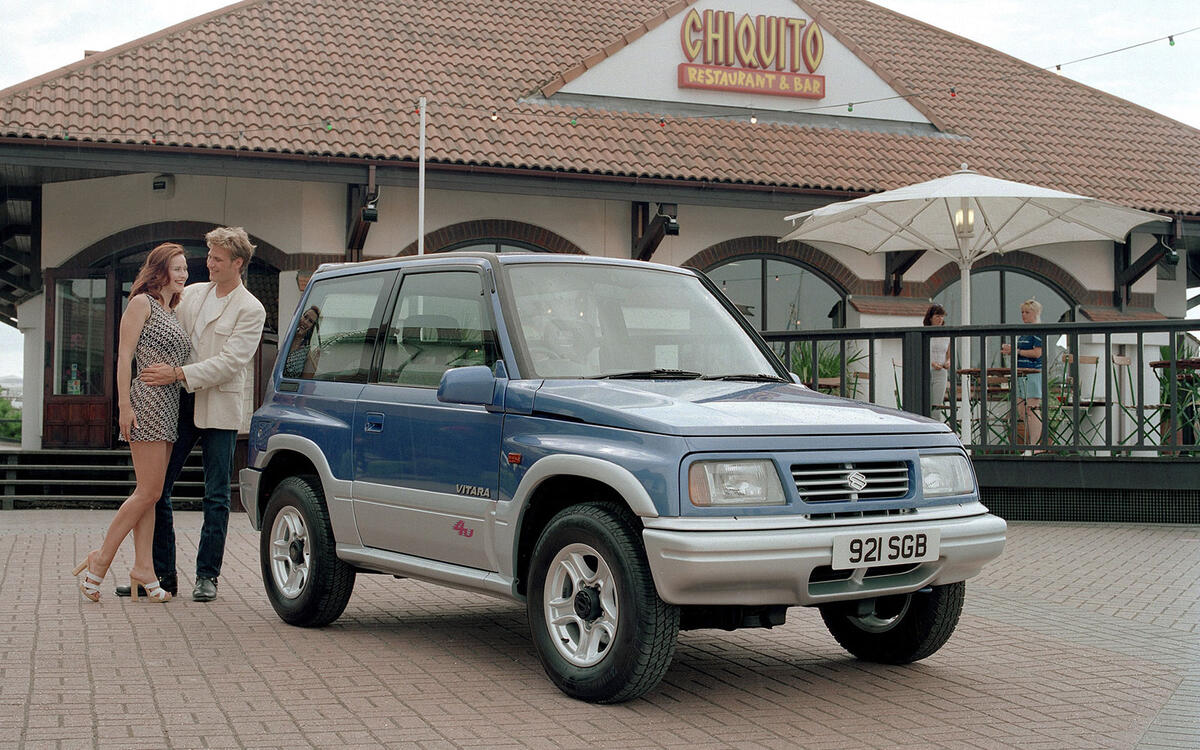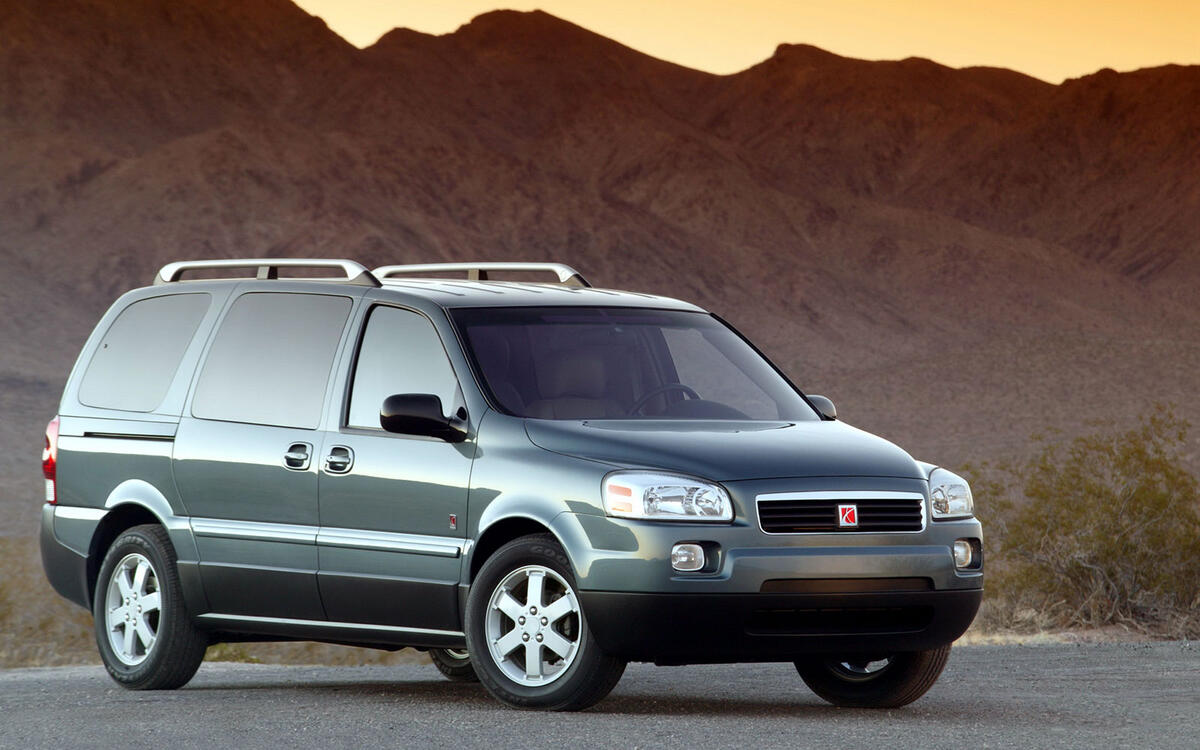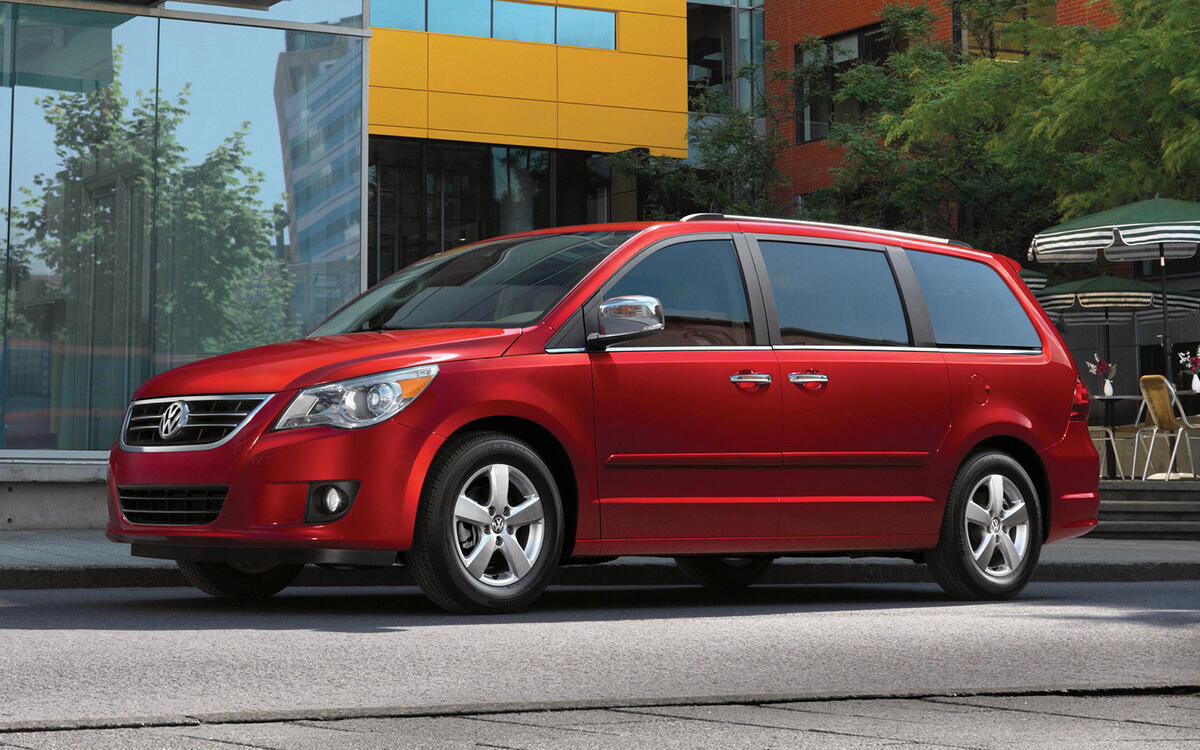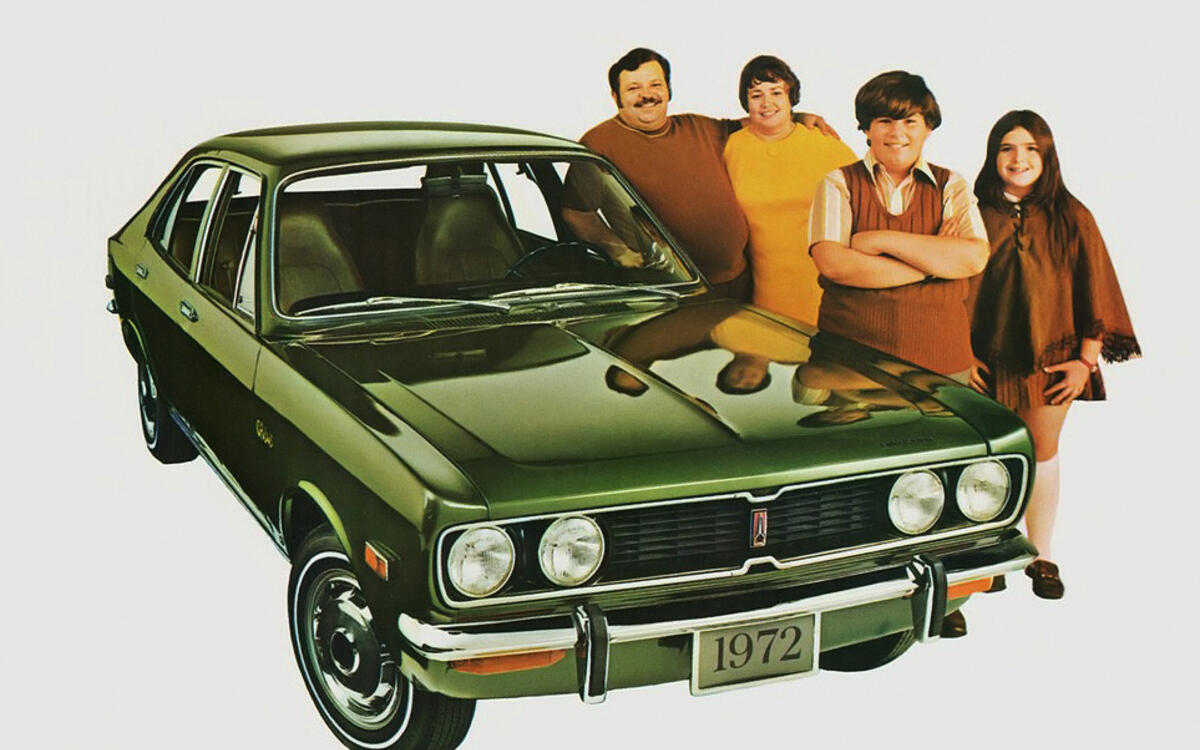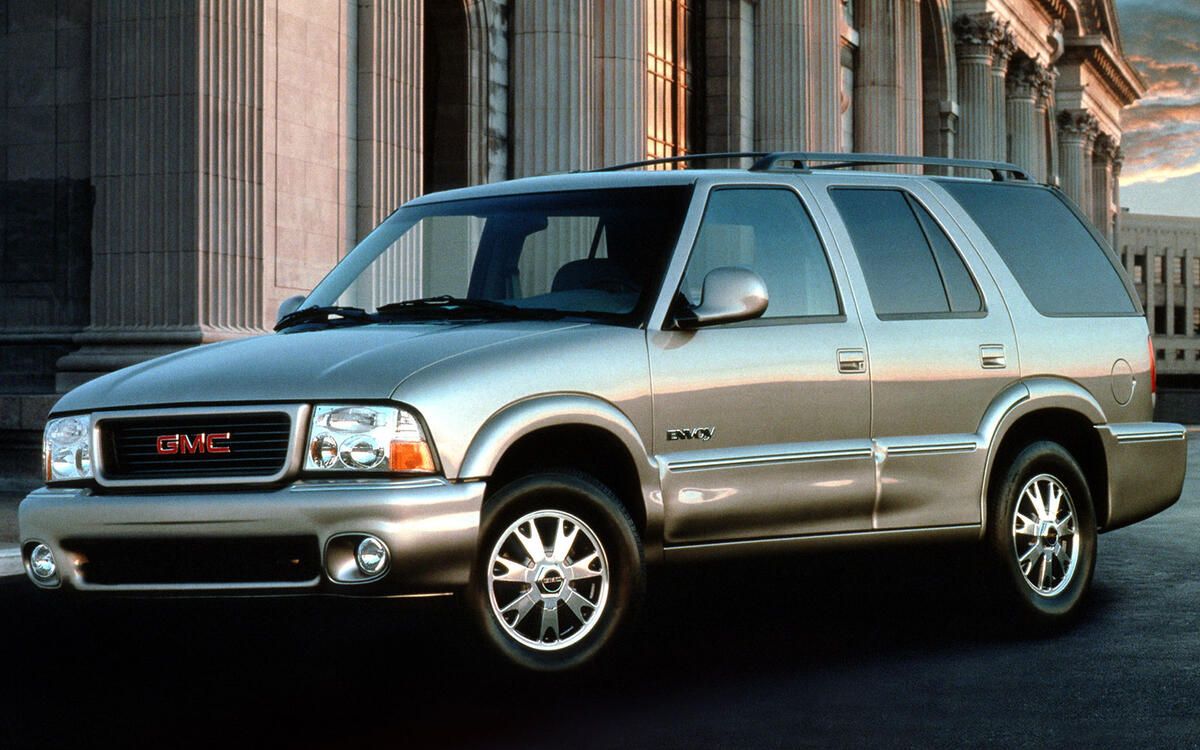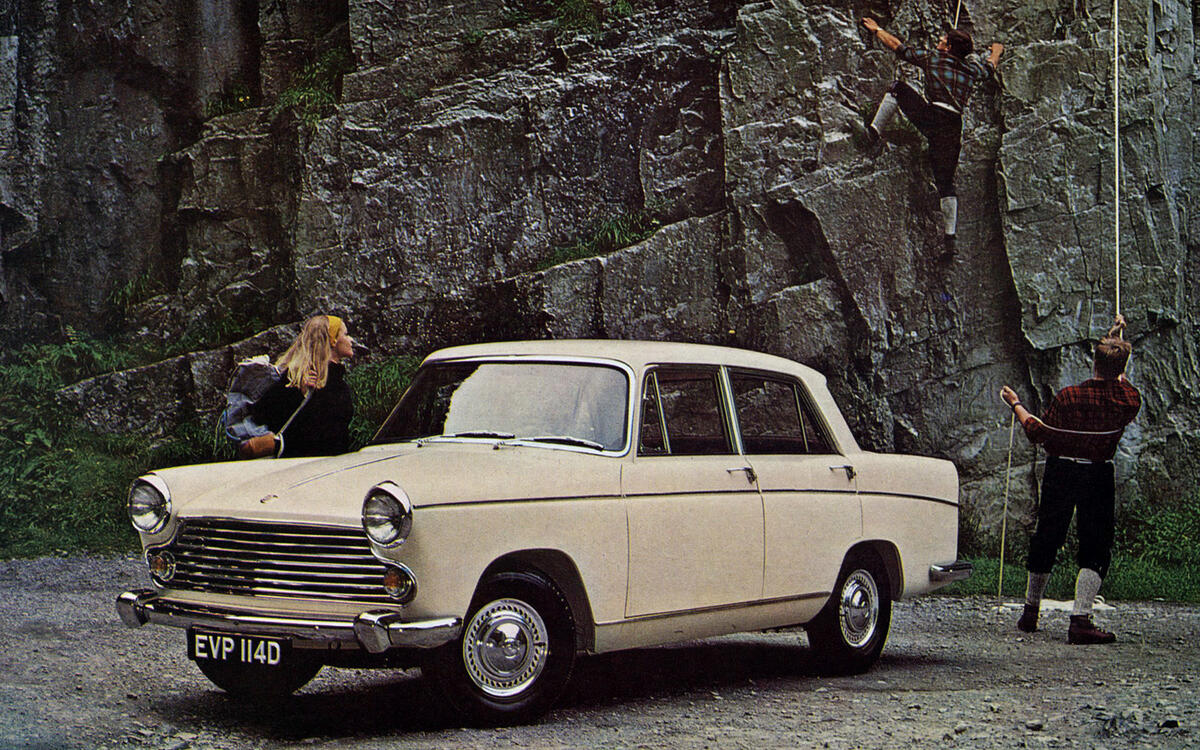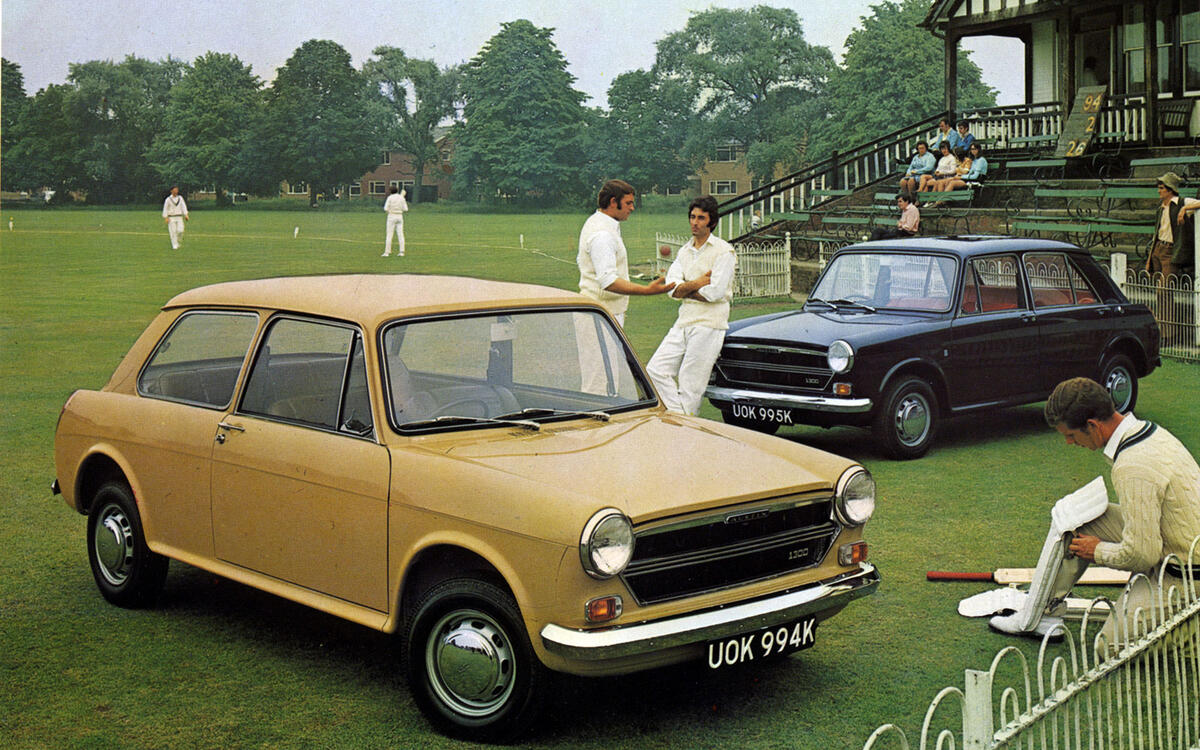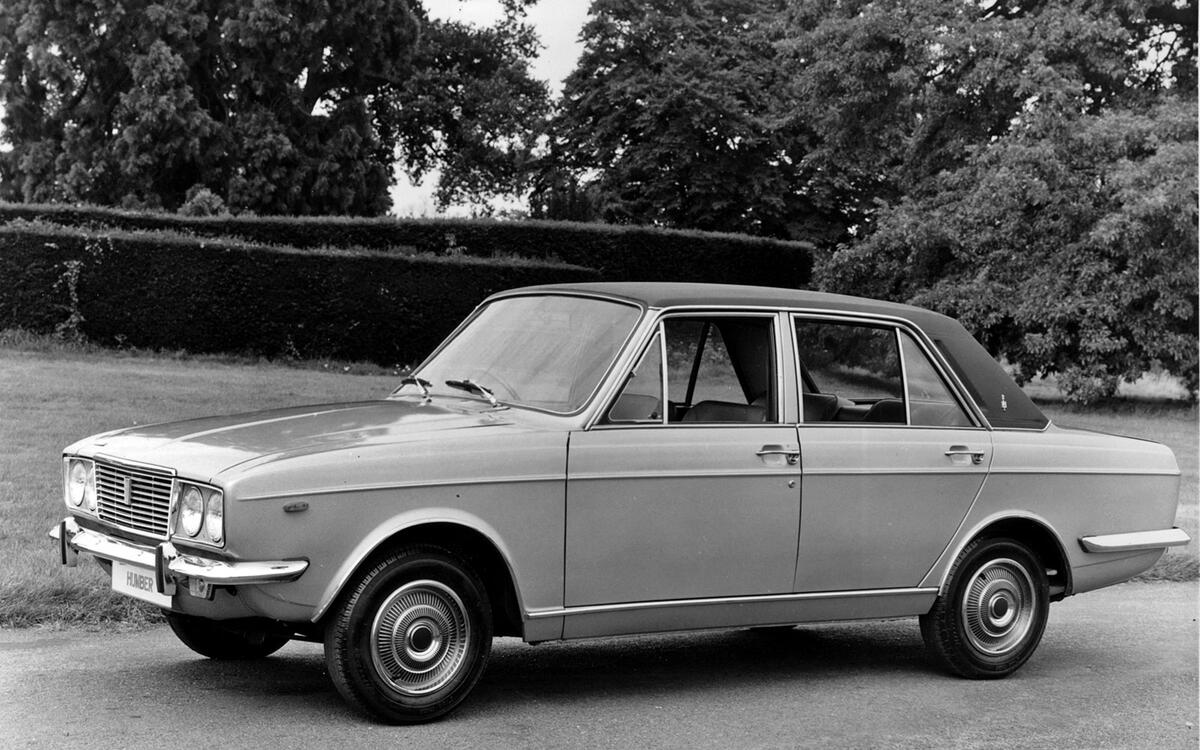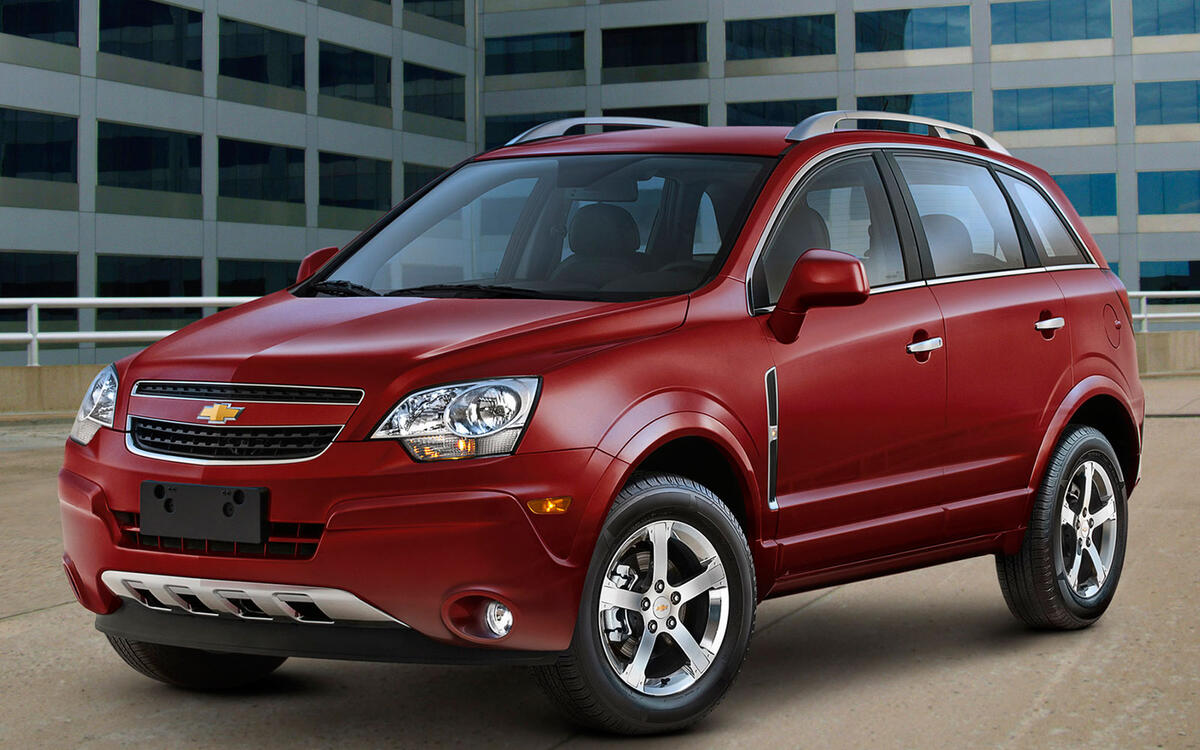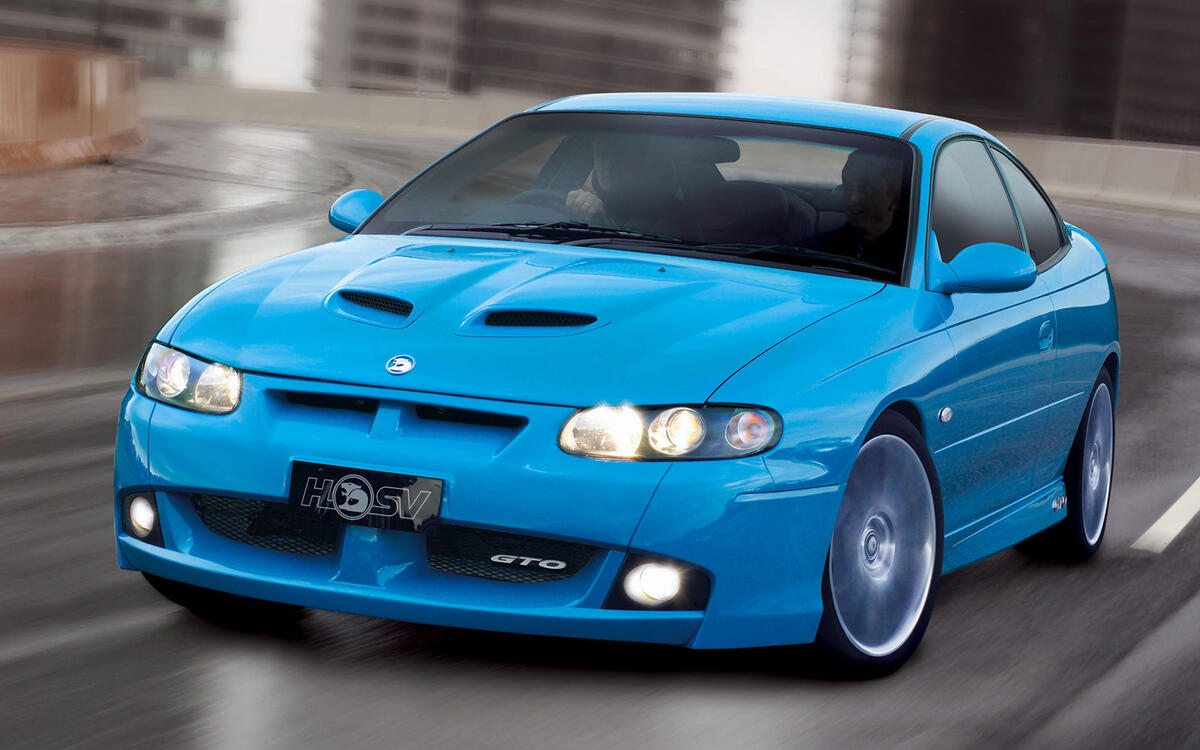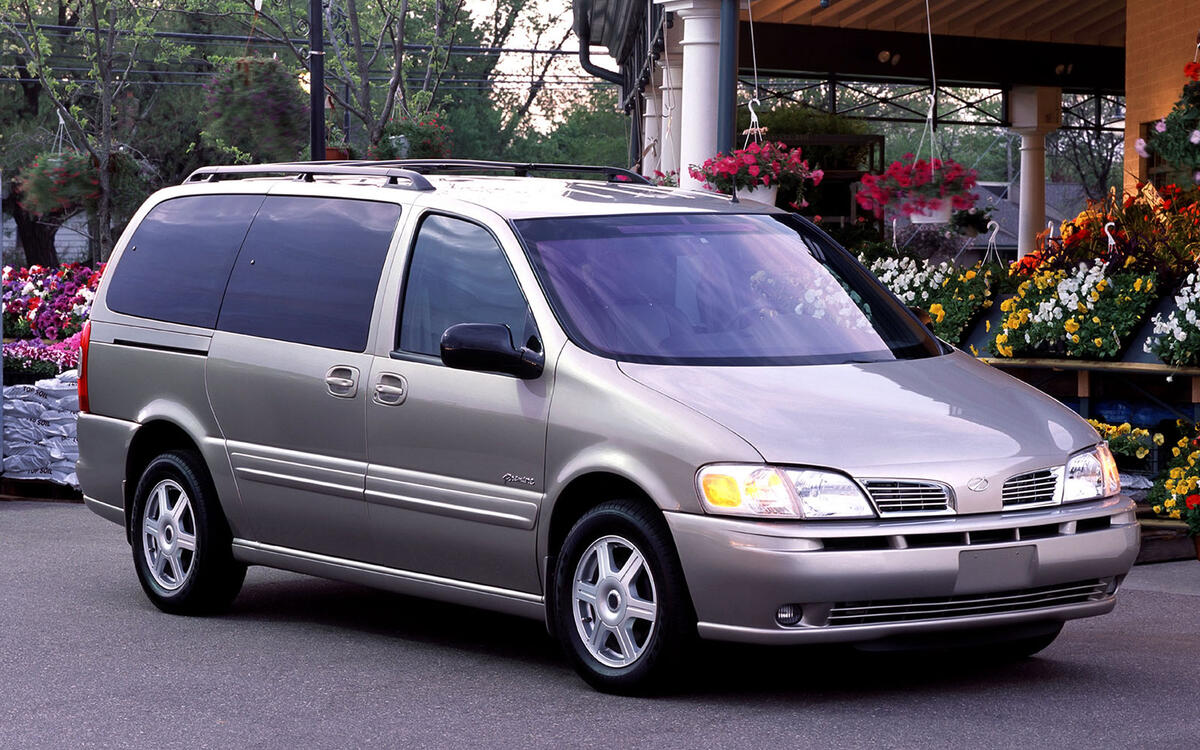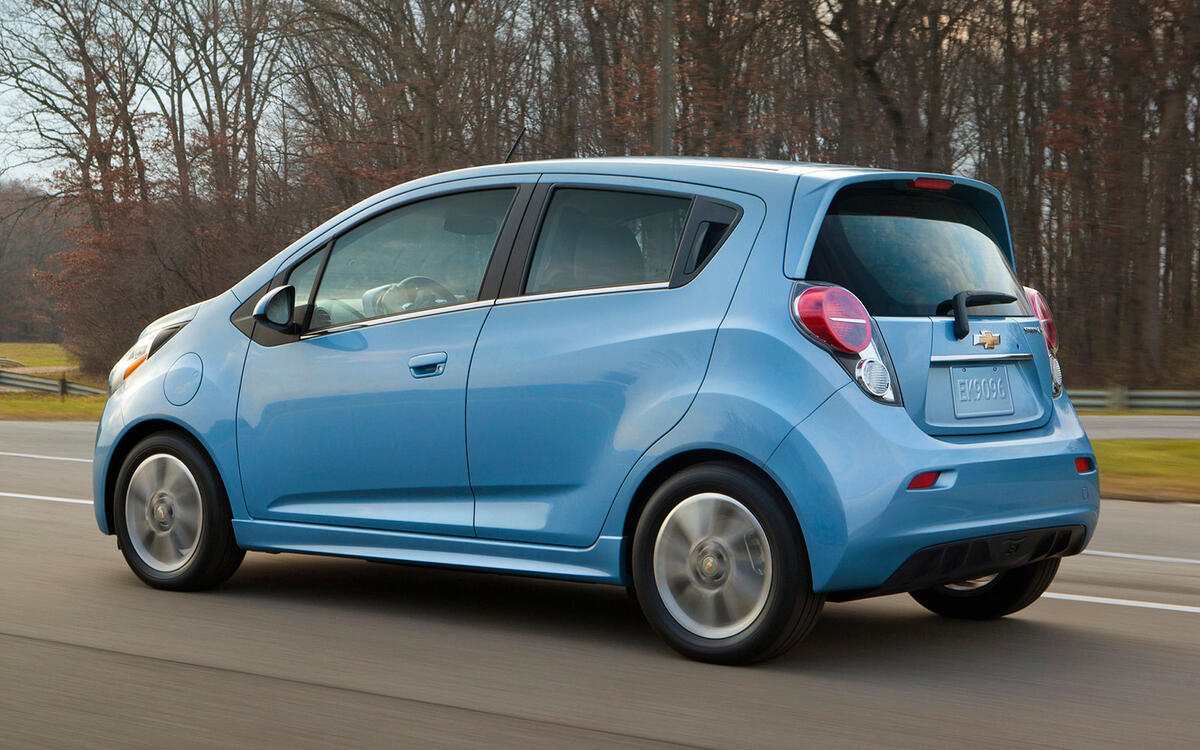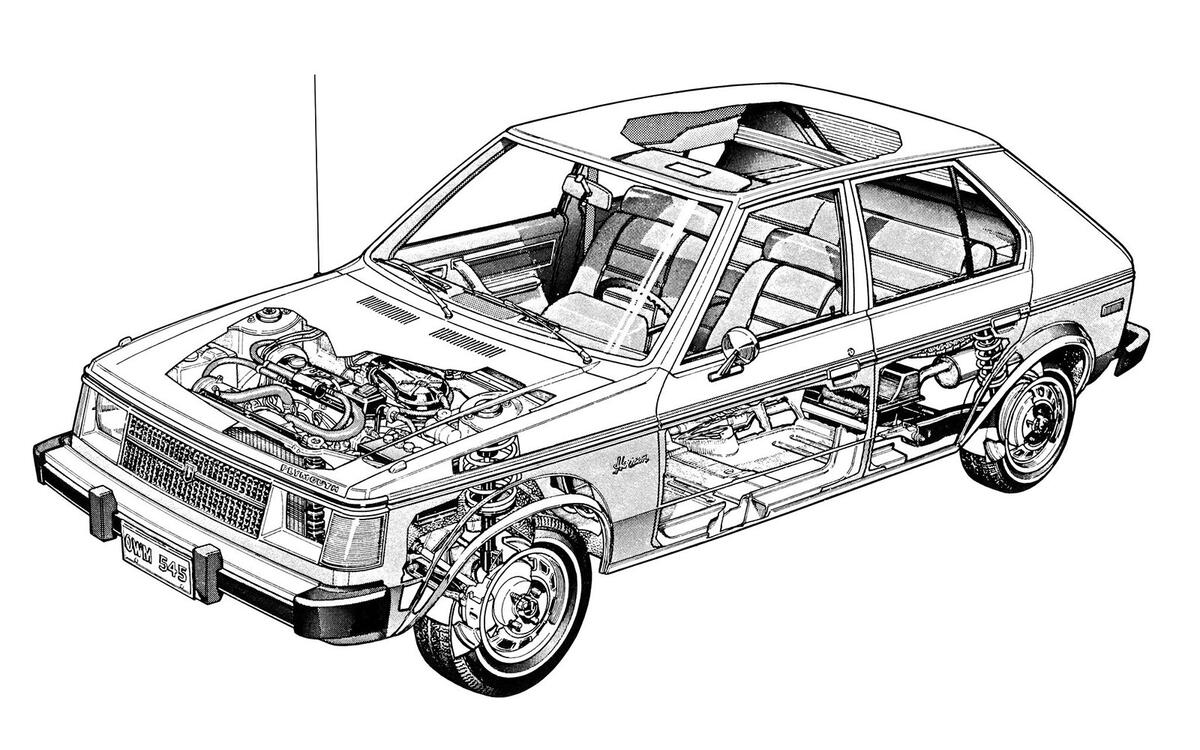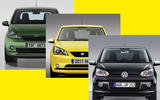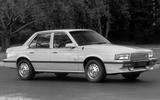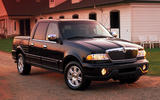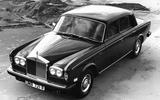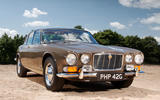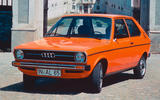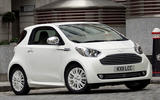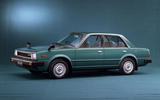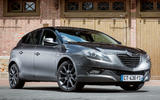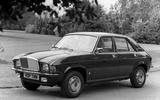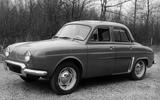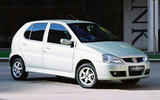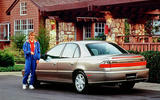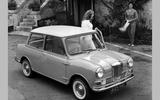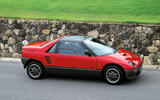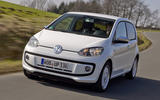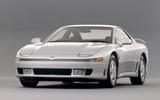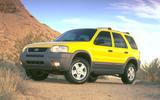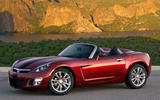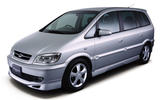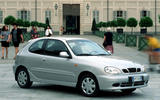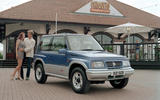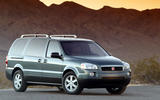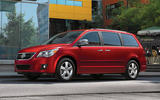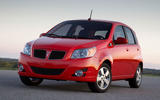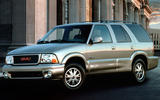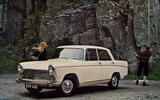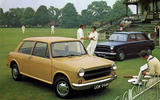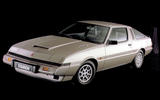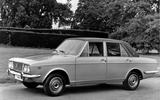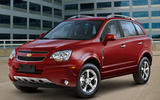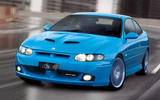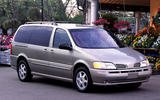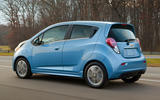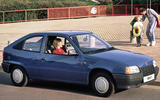 Slide of
Slide of
For decades car makers have confused buyers by offering models with an array of identities.
It’s a practice known as badge-engineering, not to be confused with platform sharing or joint ventures, both of which have become increasingly common in recent years. Some car companies have indulged heavily while others have not.
Here we bring you more than six decades of the badge-engineered car – the year mentioned references the first year of production of the second model in the family:
 Slide of
Slide of
Cadillac Cimarron (1982) – 2 models
When GM realised in the early 1980s that BMW and Mercedes were encroaching on its territory at the lower end of the luxury segment, it stuck Cadillac badges onto the Chevrolet Cavalier in a bid to compete.
But the high prices and four-cylinder engines made the Cimarron (pictured) a laughing stock; even the introduction of a V6 in 1985 did nothing to make the car more saleable.
 Slide of
Slide of
Ford F-150 (2002) – 2 models
With the F-150 being the world’s biggest-selling truck, in 2002 Ford decided to take it upmarket with a Lincoln edition called the Blackwood, it couldn’t fail.
Well that’s what Ford assumed, but in reality the Blackwood bombed with little more than 3,000 made in a single season before the plug was pulled.
 Slide of
Slide of
Rolls-Royce Silver Shadow (1965) – 2 models
Once Rolls-Royce had swallowed up Bentley Motors in 1931, the two brands shared much the same model range, albeit sometimes with significant differences.
Not where the Silver Shadow (pictured) and Bentley T-Series were concerned though; the two were interchangeable and because buyers saw the Roller as the more prestigious brand, just 2,280 four-door T-Series Bentleys were sold, compared with around 30,000 Silver Shadows.
 Slide of
Slide of
Jaguar XJ (1968) – 2 models
Jaguar acquired Daimler in 1960 - the British company, not to be confused with its German namesake, though both are named after the same man - and from that point on, most Daimlers were little more than rebadged Jaguars.
While the Daimler version of the Jaguar Mk2 got its own 2.5-litre V8, later Jag saloons shared the same bodies and mechanicals, which in the case of the latter initially meant the classic twin-cam XK straight-six engine.
 Slide of
Slide of
Audi 50 (1974) – 2 models
Within weeks of Audi launching its first small hatch in 1974 (pictured), Volkswagen decided it wanted some of the action and bagged the car for itself, renaming it the Polo.
Hot on the heels of the Golf that had arrived earlier that year, the Polo range was more varied than the 50, which remained in production until 1978.
 Slide of
Slide of
Toyota IQ (2011) – 2 models
When Aston Martin needed to cut its average CO2 emissions across its range it hit upon the bright idea of rebadging the Toyota IQ as the Cygnet, albeit it with a few bodywork updates and an interior retrim.
But the company seriously over-estimated demand and production was wound up after less than three years with just 786 cars built; Aston had predicted 2000 per year. Oops.
 Slide of
Slide of
Triumph Acclaim (1981) – 2 models
British Leyland signed a deal with Honda in 1979, to collaborate on forthcoming models.
The former’s Triumph Dolomite was getting long in the tooth so it rebadged the latter’s Ballade and flogged it as the Triumph Acclaim. There were no Triumph parts in the Acclaim at all, aside from the badges – and it was by far the most reliable car the company had ever sold.
 Slide of
Slide of
Land Rover Discovery (1993) – 2 models
When Honda realised that it needed a 4x4 in its armoury in the early 1990s, it licenced the original Discovery from Land Rover and sold it in Japan and New Zealand as the Crossroad (pictured).
Honda reintroduced the Crossroad name in 2007-2010, an SUV now engineered in-house.
 Slide of
Slide of
Lancia Delta (2011) – 2 models
When Fiat merged with Chrysler it proved how shameless it could be with its abuse of brands.
First we got the Lancias Delta (pictured) and Ypsilon rebadged as Chryslers for the UK market, then the Chrysler 200 and Grand Voyager were rebadged as Lancias, the latter marketed as the Flavia.
No wonder Lancia is now on its last legs.
 Slide of
Slide of
Vanden Plas 1500 (1974) – 2 models
Don’t call it an Allegro! When British Leyland introduced the Vanden Plas 1500 in 1974, it was marketed as the Vanden Plas 1500 (pictured).
Aside from a very dodgy grille being grafted on, there were picnic tables inside and lashings of wood and leather. But you couldn’t get away from the fact that ultimately it was just a badge-engineered Allegro.
 Slide of
Slide of
Lancia Delta (1981) – 2 models
Saab helped Lancia to engineer the Delta and in return, the Italian company allowed the Swedish one to sell the boxy hatch in Scandinavia.
The car was sold as the Saab-Lancia 600 (pictured) but Saab buyers expected their cars to have the build quality of a tank – but the 600 had the strength of a pram. It was a disaster.
 Slide of
Slide of
Lotus Elan (1995) – 2 models
This wasn’t really a badge-engineered car, but it was an intriguing instance of the car industry at play.
Once GM-owned Lotus had finished making its front-wheel drive Elan in 1995, Kia bought the tooling and made this two-seater sportster from 1996 until 1999. It was sold only in Kia’s home market.
 Slide of
Slide of
Alfa Romeo Dauphine (1959) – 2 models
The Dauphine was a great success for Renault, and Alfa Romeo wanted a slice of that cake.
In a bid to enjoy some of Renault’s success, Alfa built the four-door saloon under licence, but the project proved to be something of a disaster.
 Slide of
Slide of
Saab 9-2X (2005) – 2 models
In 2005 Saab launched an estate car that should never have happened. Little more than a rebadged Subaru Impreza, the Saab 9-2X came about because GM owned Saab plus a stake in Fuji Heavy Industries, the owner of Subaru.
Made for just two seasons, around 10,000 9-2Xs were built.
 Slide of
Slide of
Rover CityRover (2003) – 2 models
Rover had been trying to move upmarket, so what better way to reinforce this than by taking one of the world’s cheapest cars and screwing your badge to the nose?
When the Indian-made Tata Indica became the Rover Cityrover (pictured) there was no attempt to make the car more palatable to more demanding British buyers, even after Rover absurdly bunged a Union Jack on its back.
Soon after, MG Rover shut up shop for good.
 Slide of
Slide of
Opel Omega (1996) – 3 models
GM Europe selling the same car with Opel and Vauxhall badges was to be expected, but less predictable was that this car should cross the Atlantic to wear Cadillac badges.
It was simple enough; GM needed an entry-level model that was still spacious and comfortable and the European saloon fitted the bill perfectly.
Incredibly, when the Catera (pictured) failed to find buyers GM resisted the temptation to then nail on an array of other US badges such as Buick or Oldsmobile.
 Slide of
Slide of
Mini (1961) – 3 models
BMC didn’t always get carried away and nail every available badge to every model; sometimes it held back.
The poshed-up be-finned Riley Elf was an example of this; it was sold under only the Riley and Wolseley brands (as the Elf and Hornet respectively). BMC had done the same thing with the Riley 1.5 and Wolseley 1500; there were no Austin, MG, Morris or Vanden Plas editions of these either.
 Slide of
Slide of
Autozam AZ-1 (1992) – 3 models
Here’s one for all you geeks out there; this is about as obscure as it gets. The Autozam AZ-1 (pictured) was sold by Mazda but it was actually engineered by Suzuki, which sold its own version called the Cara.
 Slide of
Slide of
Volkswagen Up (2011) – 3 models
The Volkswagen Group rule the roost when it comes to repackaging; its MQB platform underpins a mind-boggling array of models.
But sometimes we get the same car wearing different badges instead, with no attempt to separate them – which is why the Volkswagen Up (pictured) also comes in Seat Mii and Skoda Citigo flavours, most of them sold in most markets apart from North America.
 Slide of
Slide of
Mitsubishi 3000GT (1991) – 3 models
Sold in Japan as the Mitsubishi GTO (pictured), this junior supercar was marketed as the 3000GT in most markets around the world.
That included the US, where confusingly, buyers could also buy it as the Dodge Stealth.
 Slide of
Slide of
Ford Escape (2001) – 3 models
When the first-generation Ford Escape (pictured) arrived in 2001 it was developed in conjunction with Mazda – which is why the Mazda Tribute was the same car, along with the Mercury Mariner because Ford just couldn’t resist a bit of badge engineering.
 Slide of
Slide of
Opel GT (2007) – 3 models
One of the sharpest-looking sports cars of the past 20 years deserved a wide audience and that’s exactly what the Opel GT got.
It was sold across Europe wearing Opel badges while in the US it was the Saturn Sky (pictured) or the Pontiac Solstice. Sadly it didn’t make it to the UK.
 Slide of
Slide of
Vauxhall/Opel Zafira (2001) – 3 models
Depending on the market, Subaru means different things to different people. While many love its WRX STi rally car for the road, for many Subaru is all about tough workhorses such as its Forester and Legacy.
What it isn’t is a purveyor of ultra-dull seven-seat MPVs – but that’s what Subaru created when it stuck its own badge onto the Vauxhall/Opel Zafira to come up with the Traviq (pictured).
 Slide of
Slide of
Daewoo Lanos (1997) – 4 models
Designed by Giorgetto Giugiaro and introduced in 1997, the Honda Civic-esque Daewoo Lanos (pictured) was quite a neat-looking small hatch, so no wonder an array of companies queued up to build it under licence.
These included Polish company FSO and Russia’s ZAZ, and while building under licence isn’t the same as badge engineering we just had to include this because the Lanos was also sold as the unfortunately-named Assol by Doninvest in Russia.
 Slide of
Slide of
Suzuki Vitara – 4 models
Depending on the market the Vitara (pictured) was sold as the Suzuki Sidekick, Chevrolet Tracker or Geo Tracker.
GM’s Geo brand (1989-2016) consisted entirely of rebadged cars made by other companies; the Prizm was really a Toyota Sprinter, the Storm was an Isuzu Impulse, the Spectrum was an Isuzu I-Mark and the Metro was a rebadged Suzuki Swift.
 Slide of
Slide of
Buick Terraza (2005) – 4 models
GM was at it again, bamboozling buyers by offering four versions of this minivan, each differing from the others only by its badging.
As well as a Buick Terraza option there were also Chevrolet Uplander, Pontiac Montana SV6 and Saturn Relay editions (pictured), all of which were as forgettable as each other.
 Slide of
Slide of
Plymouth Town & Country (1983) – 5 models
When Chrysler launched the world’s first people-carrier in 1983, buyers could choose between Dodge Grand Caravan, Plymouth Town & Country or Chrysler Grand Voyager editions.
Later on, despite having the perfectly good Sharan MPV at its disposal, VW licenced the Chrysler minivan and sold it as the Routan (pictured) while the Fiat/Chrysler tie-up also led to it being sold as a Lancia for a while.
 Slide of
Slide of
Chevrolet Aveo (2002) – 6 models
The original Chevrolet Aveo grew out of the Daewoo Kalos – a car that was as underwhelming as it’s possible to get.
Despite its lack of talent the Aveo was sold around the globe as the Holden Barina, Pontiac G3 (pictured), ZAZ Vida and in Canada it was even sold as the Suzuki Swift+.
 Slide of
Slide of
Hillman Avenger (1970) – 6 models
Rootes was at it again, with this rear-wheel drive family car that arrived in 1970.
Originally sold as the Hillman Avenger, there were also Talbot, Sunbeam and Dodge versions of it, while in the US it was sold as the Plymouth Cricket (pictured); in Argentina it was sold as the Volkswagen 1500.
 Slide of
Slide of
GMC Envoy (1998) – 6 models
GM has played the badge engineering card seriously heavily over the years, largely because 1. It used to have an awful lot of badges and 2. It reserved different brands for different countries.
But it can’t always use that excuse, because the Saab 9-7X, Chevrolet Trailblazer, GMC Envoy (pictured), Buick Rainier, Isuzu Ascender and the Oldsmobile Bravada were all sold in the US. Only Cadillac and Pontiac missed this particular GM party.
 Slide of
Slide of
BMC Farinas (1959) – 6 models
The British Motor Corporation was formed in 1952 with the merger of Austin and Morris.
The latter also owned the MG, Riley and Wolseley brands and the badge engineering began immediately – but it reached fever pitch in 1959 with the arrival of the big Farina saloon, which was offered in every form imaginable: Austin Cambridge, Morris Oxford (pictured), Riley 4/68, Wolseley 15/60, MG Magnette and in six-cylinder form there was a Vanden Plas edition too.
 Slide of
Slide of
BMC ADO16 (1962) – 6 models
In the 1960s, BMC was one of the masters when it came to badge engineering. The company had so many brands it didn’t know what to do with them all.
There was no way each marque could have its own distinct model range so BMC just stuck an array of badges onto each model, which is why we ended up with Austin, Morris, Wolseley, Riley, Vanden Plas and MG versions of the 1100 and 1300.
 Slide of
Slide of
Mitsubishi Starion (1982) – 6 models
Sold as the Colt Starion in the UK (pictured – known later as the Mitsubishi Starion), this rather neat sporting hatch could be bought in the US as a Chrysler, Dodge or Plymouth Conquest.
Or just for good measure, US buyers could also buy theirs as a Mitsubishi Starion.
 Slide of
Slide of
Humber Sceptre (1966) – 7 models
Whatever BMC could do, the Rootes Group could match. The company’s Arrow range arrived in 1966 and remained in production until 2005 in Iran.
In that time the car was sold as the Singer Gazelle and Vogue, Hillman Hunter and Humber Sceptre (pictured); later there would be Chrysler Hunter and Vogue editions while the car would end its days as the Paykan, in Iran.
 Slide of
Slide of
Chevrolet Captiva Sport (2006) – 7 models
To be fair to GM, it didn’t sell this compact SUV with an array of clashing badge options – but in every territory in which it was sold there seemed to be a unique identity.
Australians bought it as the Holden Captiva, Brits as the Vauxhall Antara while elsewhere in Europe it was the Opel Antara. Sold as the Saturn Vue in North America, in South America it was the Chevrolet Captiva Sport (pictured) – while South Koreans knew the car as the Daewoo Winstorm MaXX.
 Slide of
Slide of
Holden Monaro (2001) – 7 models
GM was at it once more, marketing the same car under an array of badges around the globe.
This time the Holden Monaro (pictured) built in Australia was also sold as the Vauxhall Monaro (later the VXR8) in the UK, while in the US the car was sold as the Pontiac GTO and G8 as well as the Chevrolet Lumina, Caprice and SS.
 Slide of
Slide of
Chevrolet Venture (1997) – 7 models
It’s another GM badge-fest, with this minivan introduced in 1997 and coming with a bewildering variety of identities. For the US market there was the Chevrolet Venture, Pontiac Montana and Trans Sport along with the Oldsmobile Silhouette (pictured).
It was sold as the Buick GL8 in China while European buyers got it as either the Opel or Vauxhall Sintra.
 Slide of
Slide of
Chevrolet Spark (2009) – 8 models
The Chevrolet Spark (pictured) wore a multitude of identities including the Chevrolet Beat and Holden Barina Spark while its successor, the current model, is also marketed as the Opel Karl, Holden Spark and Vauxhall Viva.
The original car (from 1998) was even more confusing as it carried Daewoo, Pontiac, FSO, Chevrolet and Formosa badges, among others.
 Slide of
Slide of
Talbot Horizon (1978) – 9 models
Winner of the European Car of the Year in 1978, and the joint winner of this particular feature, assuming putting as many badges on essentially the same car counts as winning.
This forgettable hatchback featured Chrysler, Talbot or Simca badges on one side of the pond, while on the other it was marketed under the Plymouth (Horizon (pictured), Scamp, Turismo) and Dodge (Charger, Omni, Rampage) banners.
 Slide of
Slide of
Opel Kadett (1984) – 9 models
The other ‘winner’ is the Opel Kadett. The Kadett badge goes right the way back to 1936.
When the model went front-wheel drive in 1979 it was also sold in the UK as the Vauxhall Astra but the next generation (from 1984) is when GM got carried away.
This car would also be sold as the Chevrolet Kadett, Pontiac Le Mans, Passport Optima, and once the car had been reheated once more it also wore an array of Daewood badges (Cielo, Le Mans, Nexia, Racer), as well as the Vauxhall (pictured) and Opel Astra.
Same car, different name - we explore the best and worst cases of badge engineering
Advertisement


